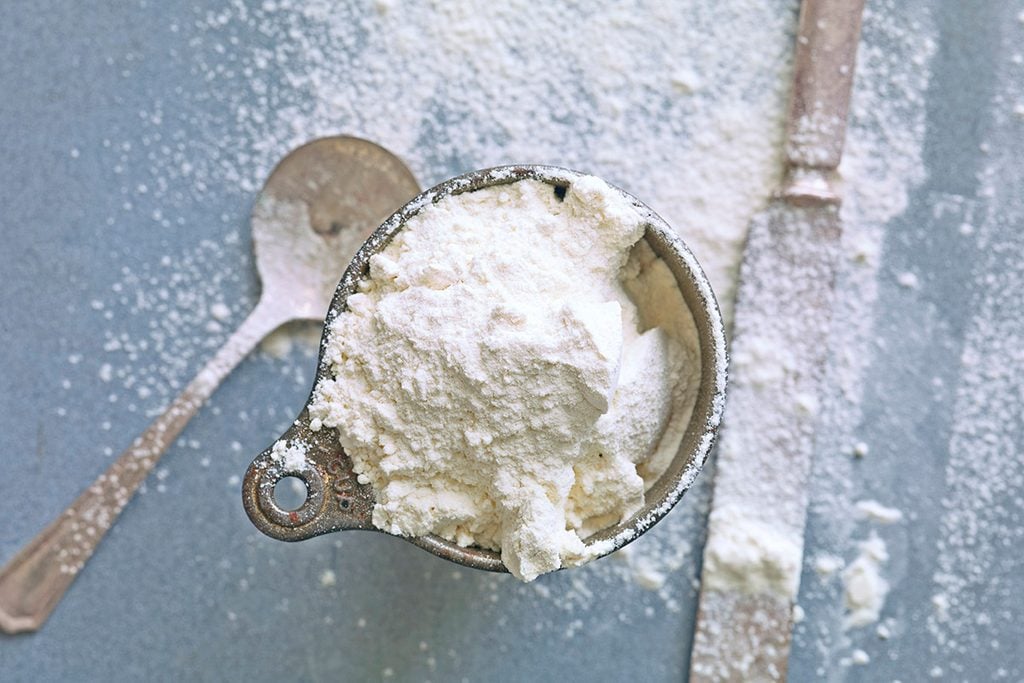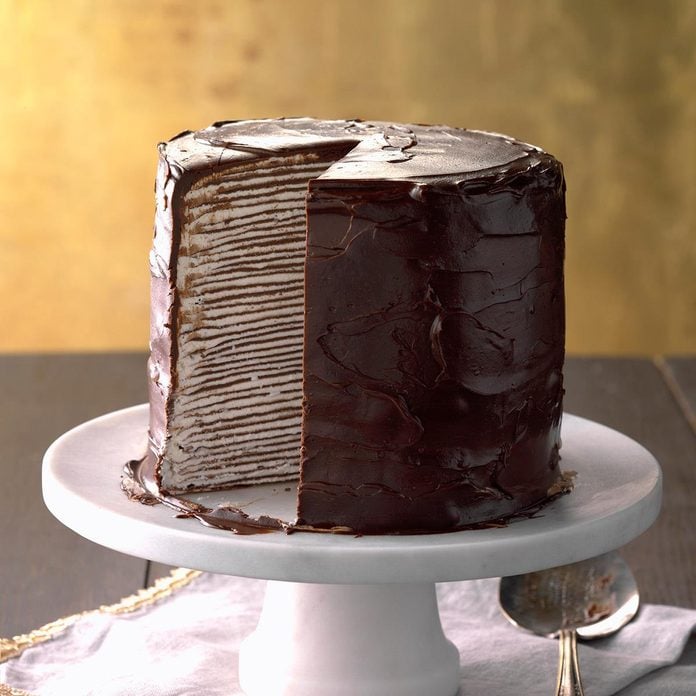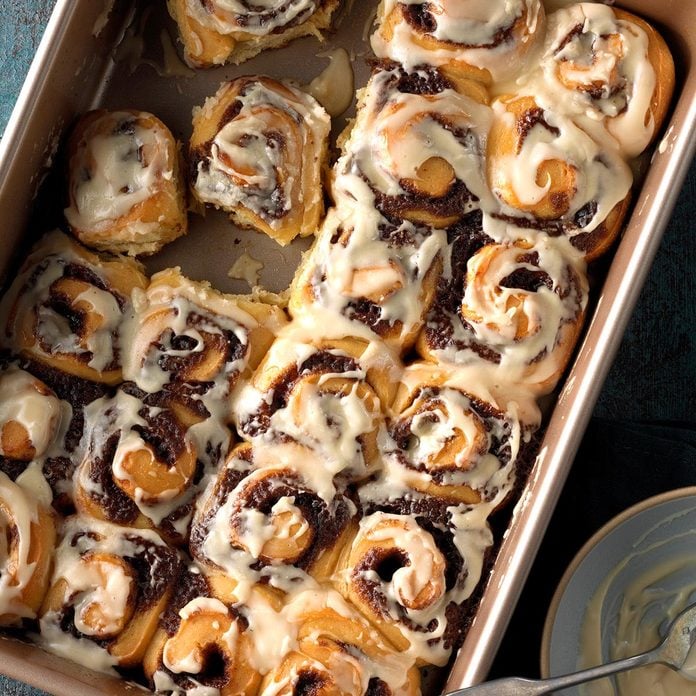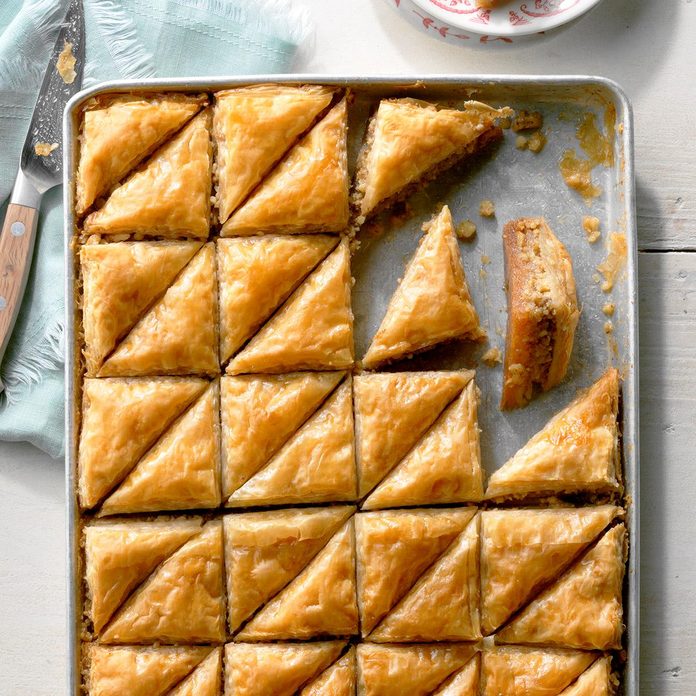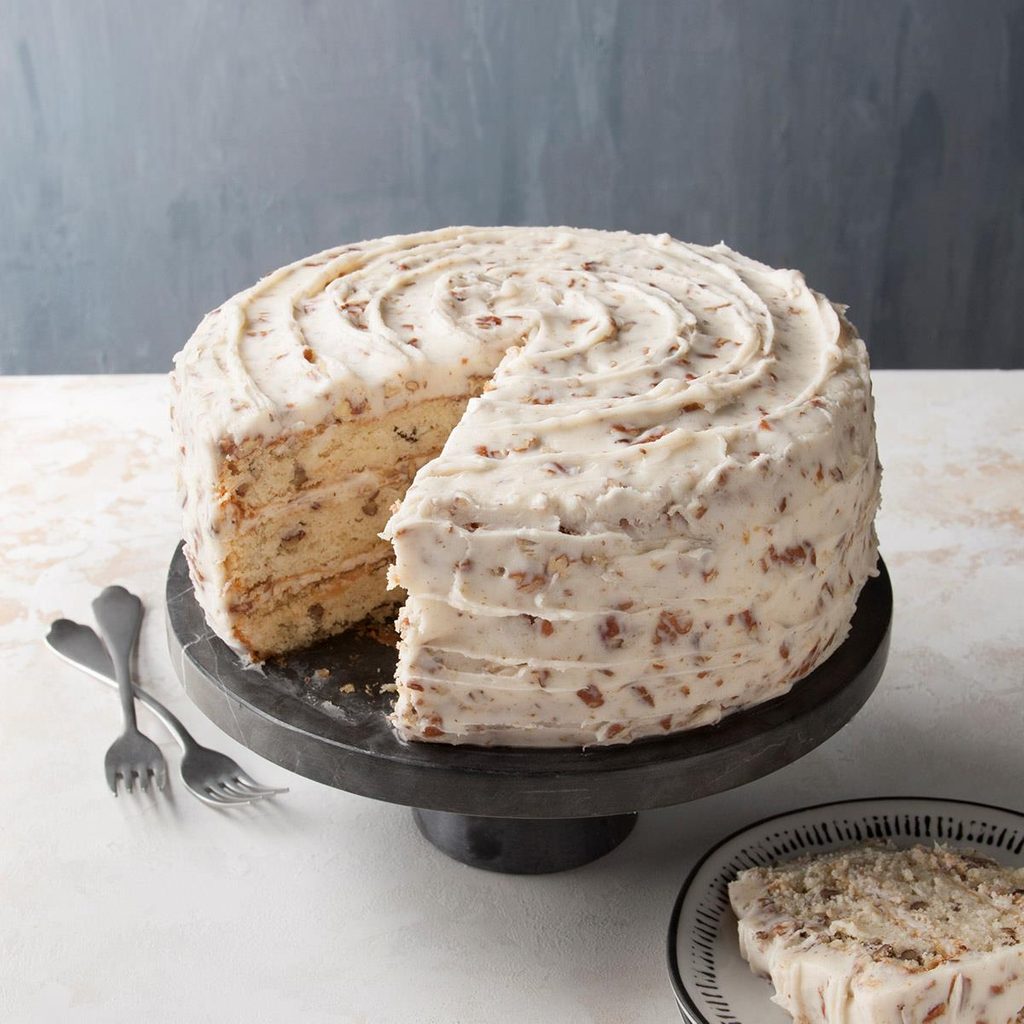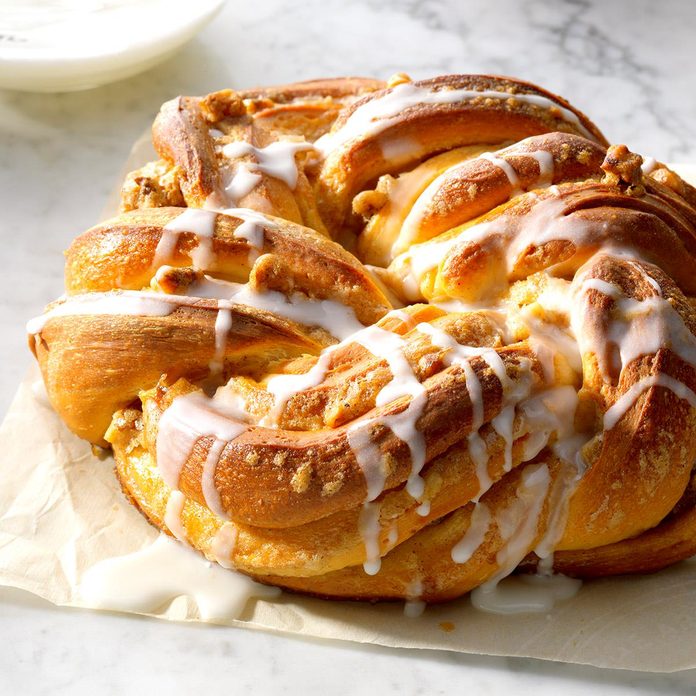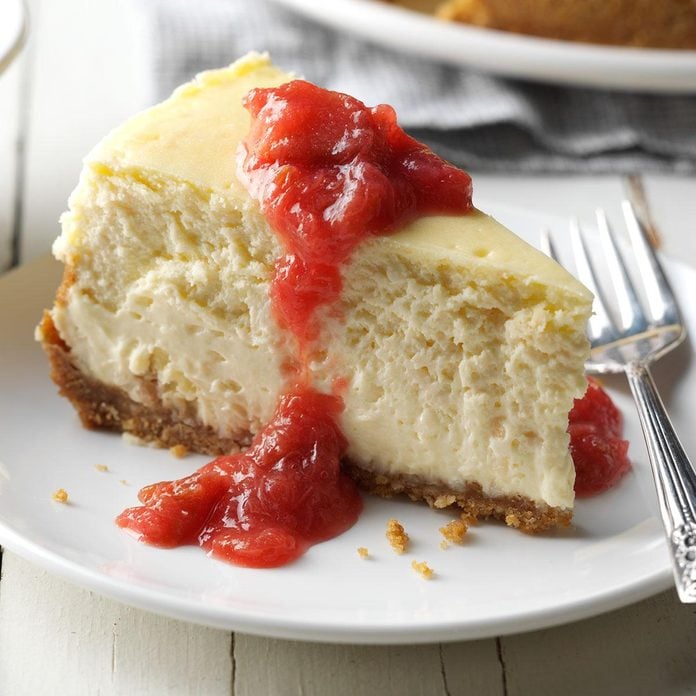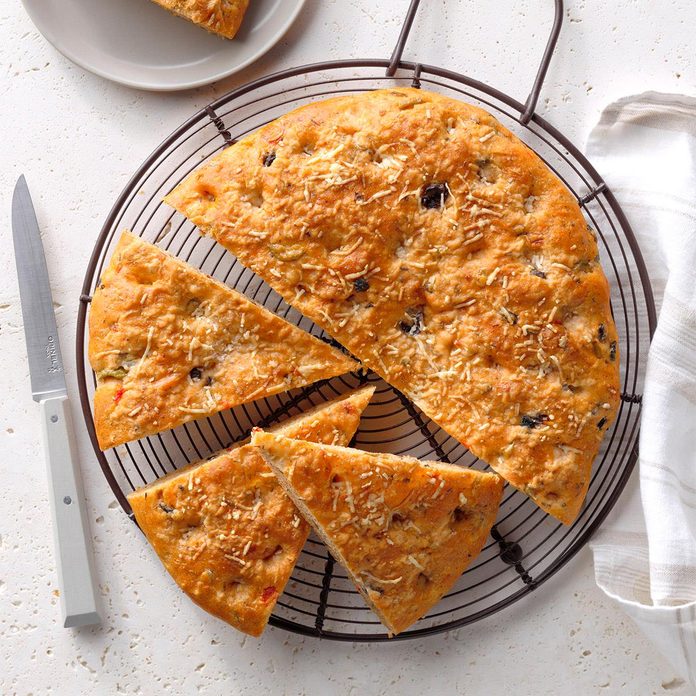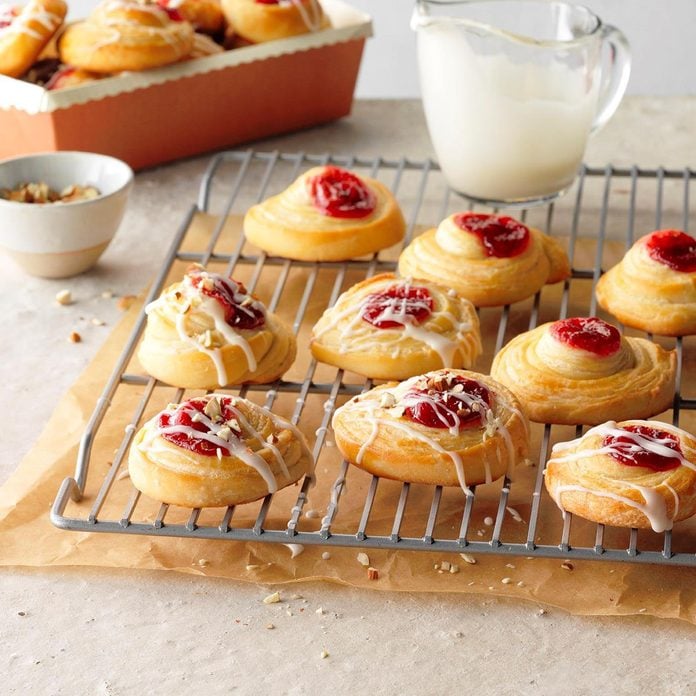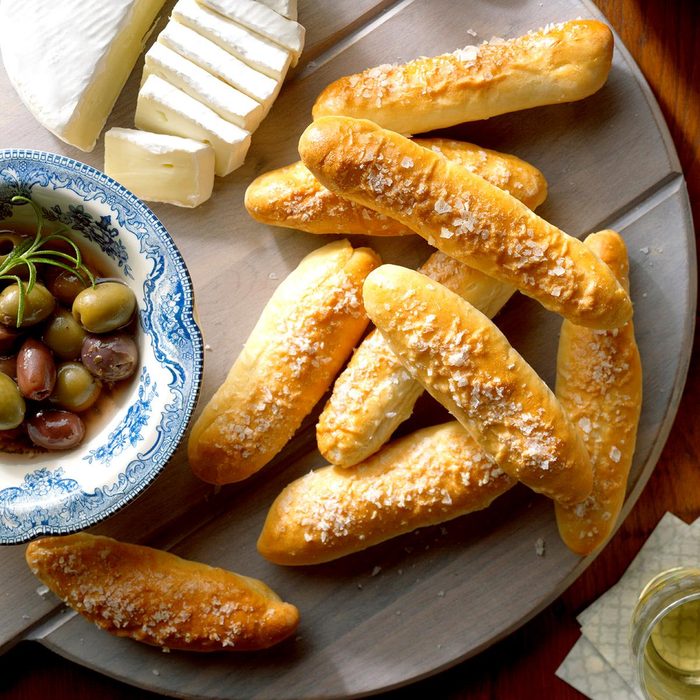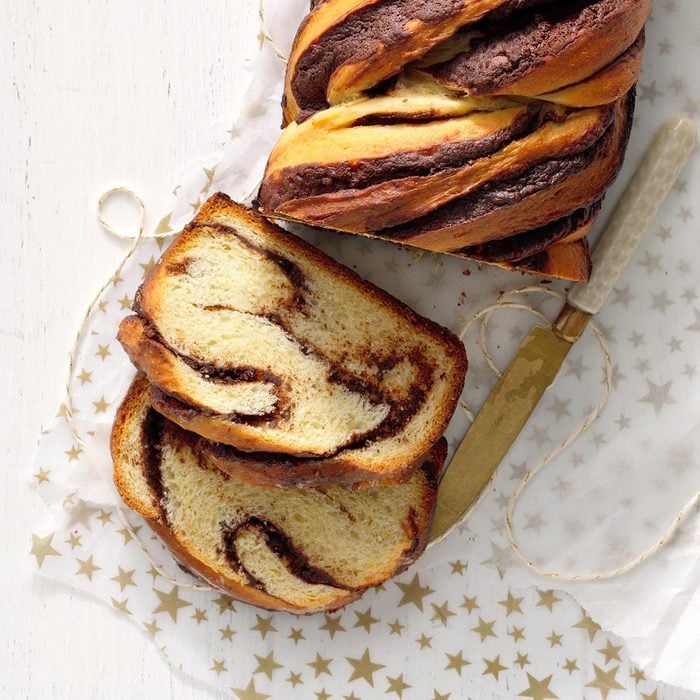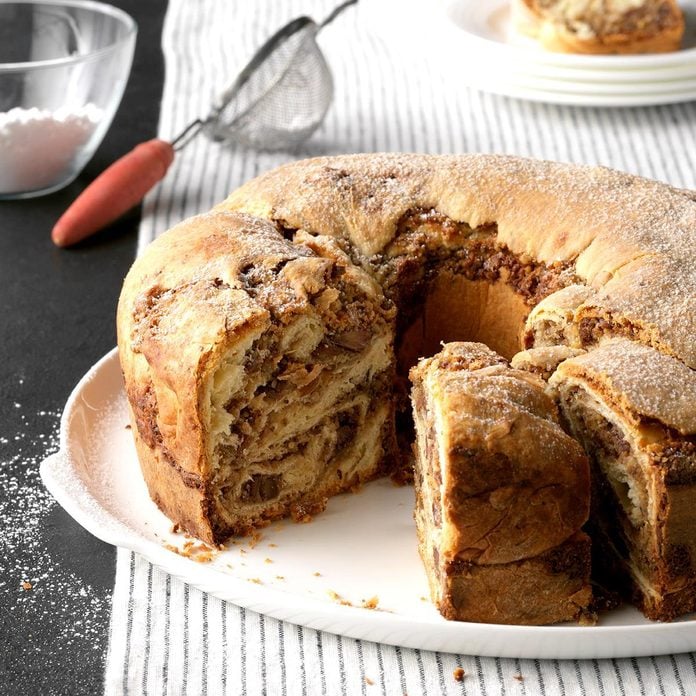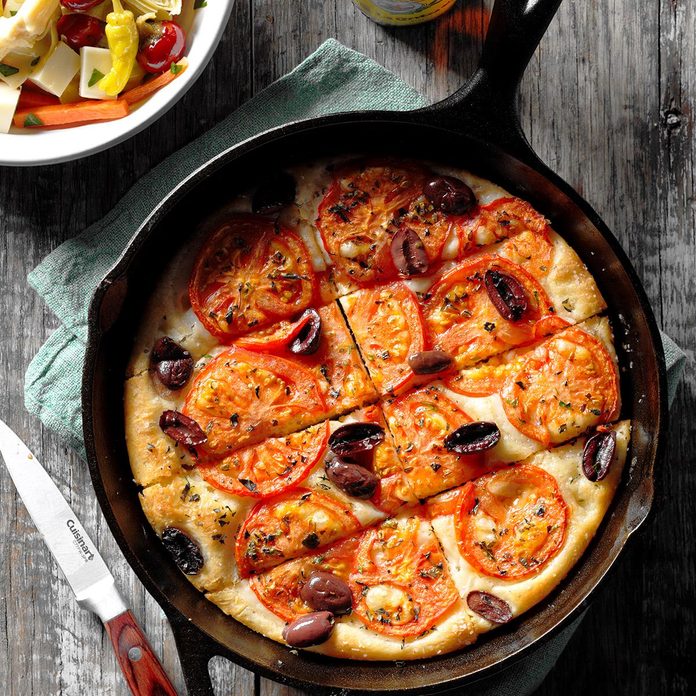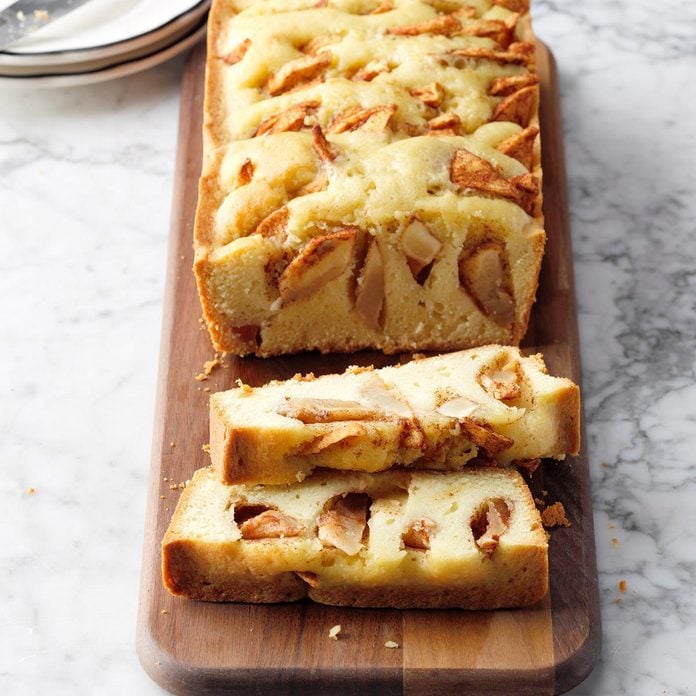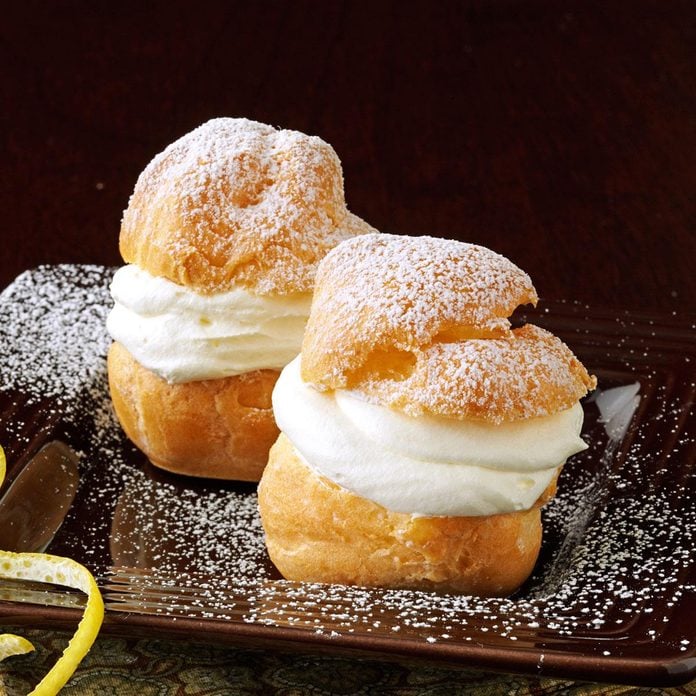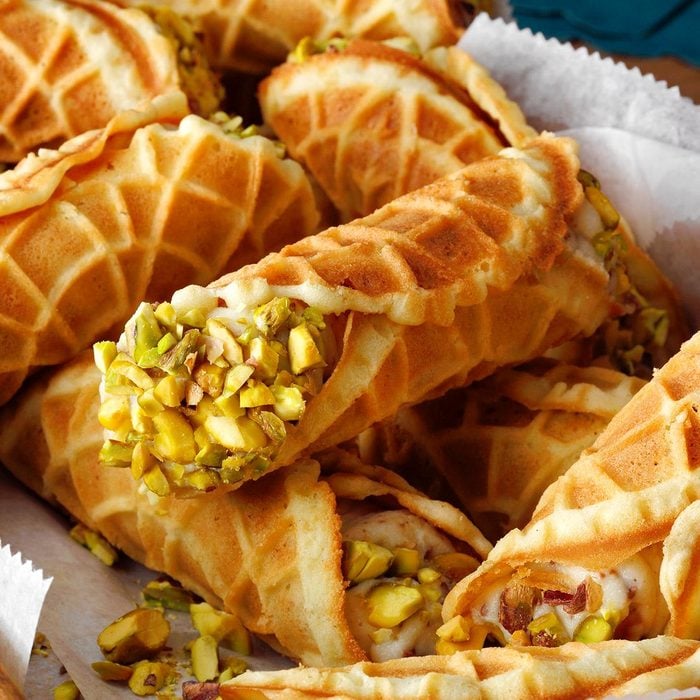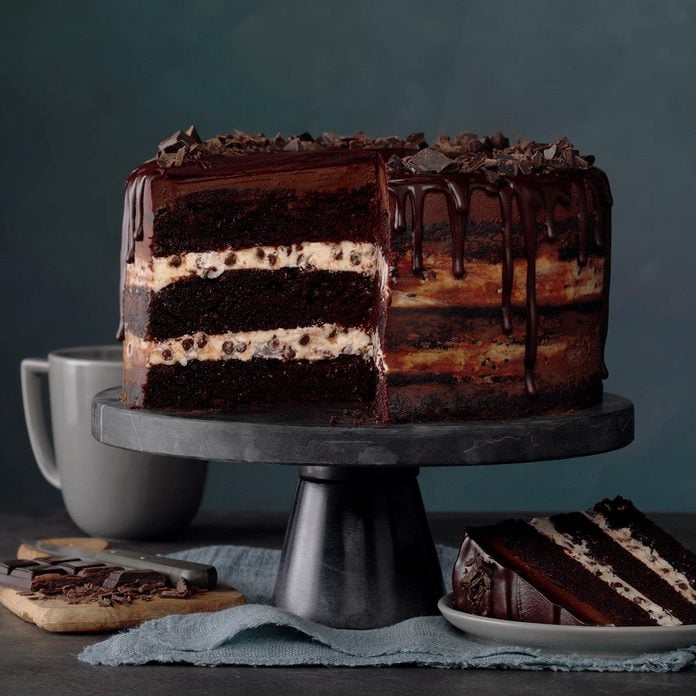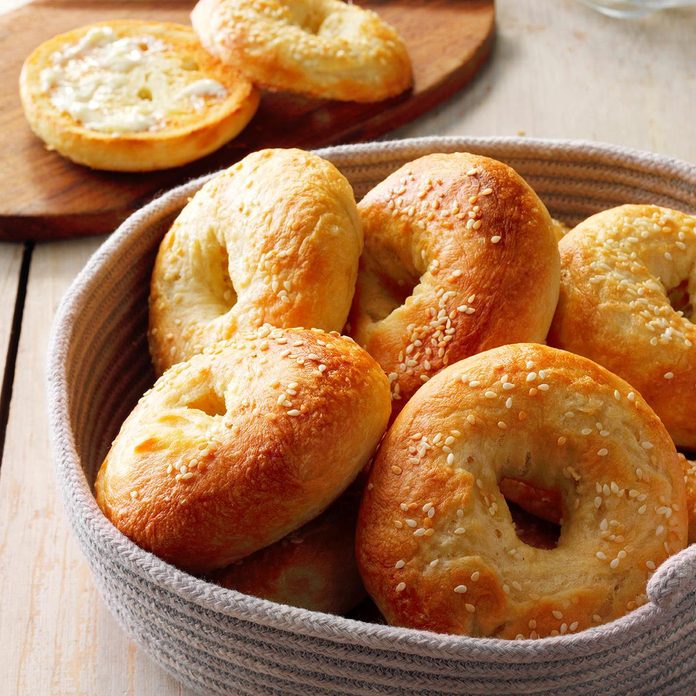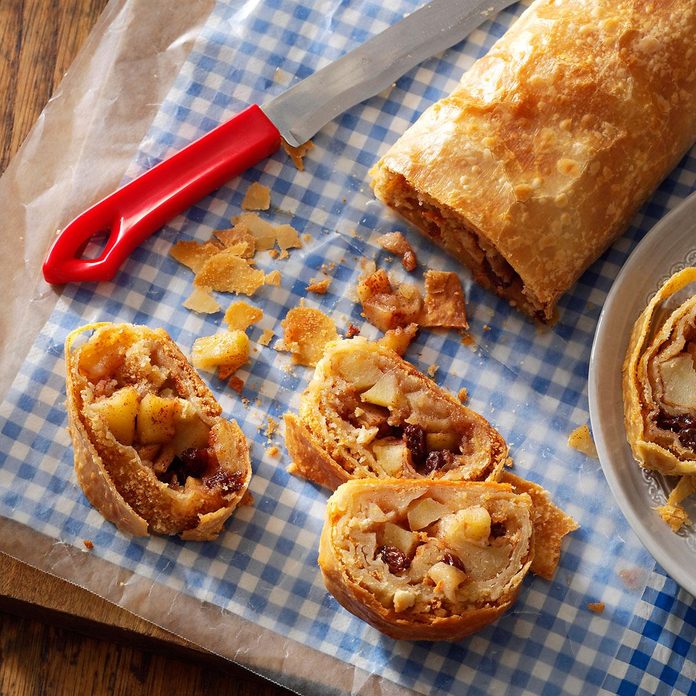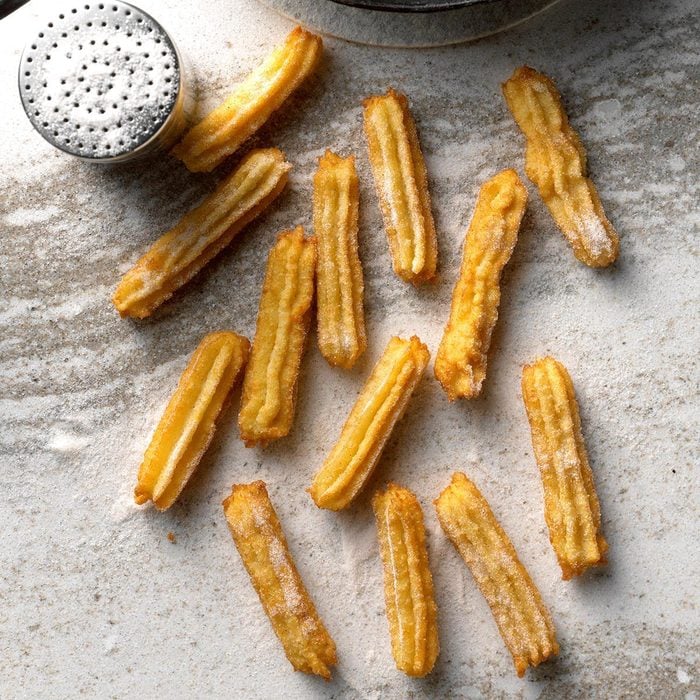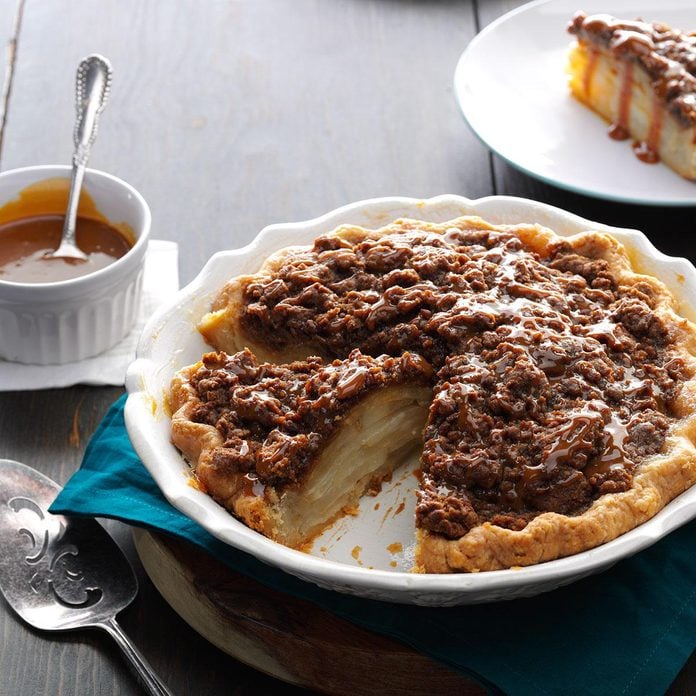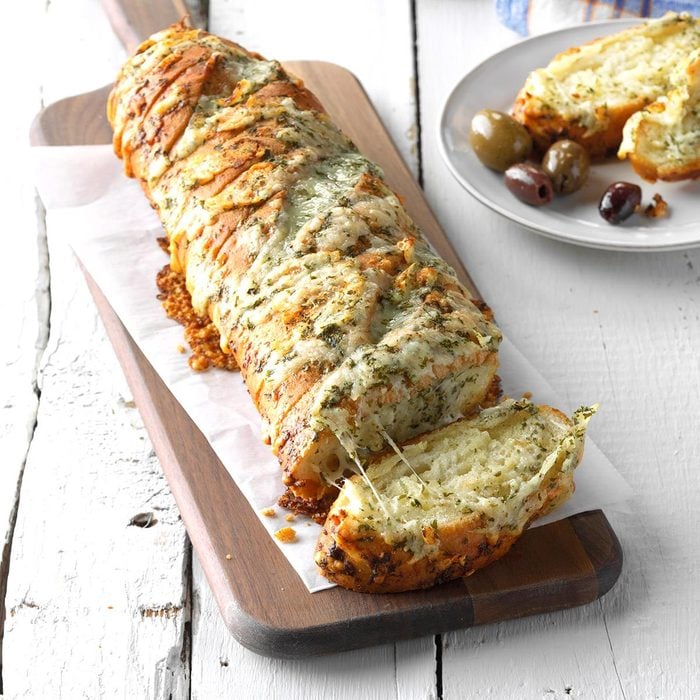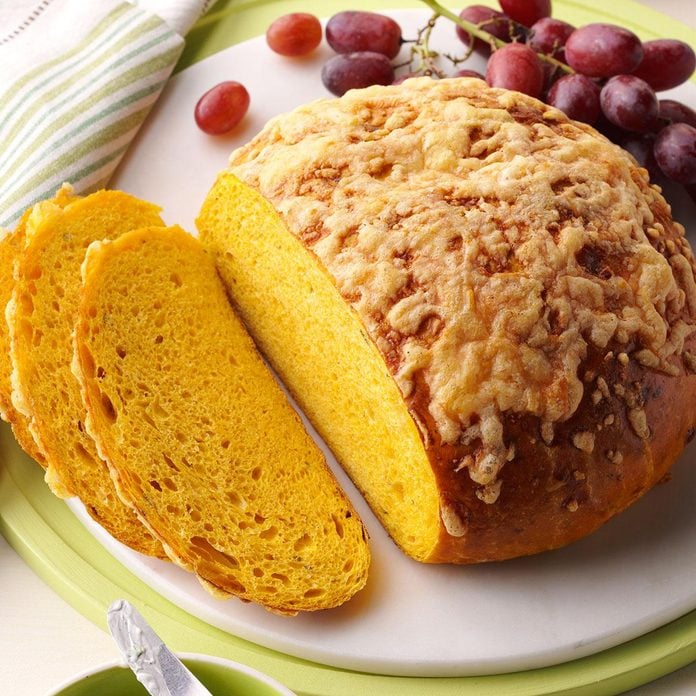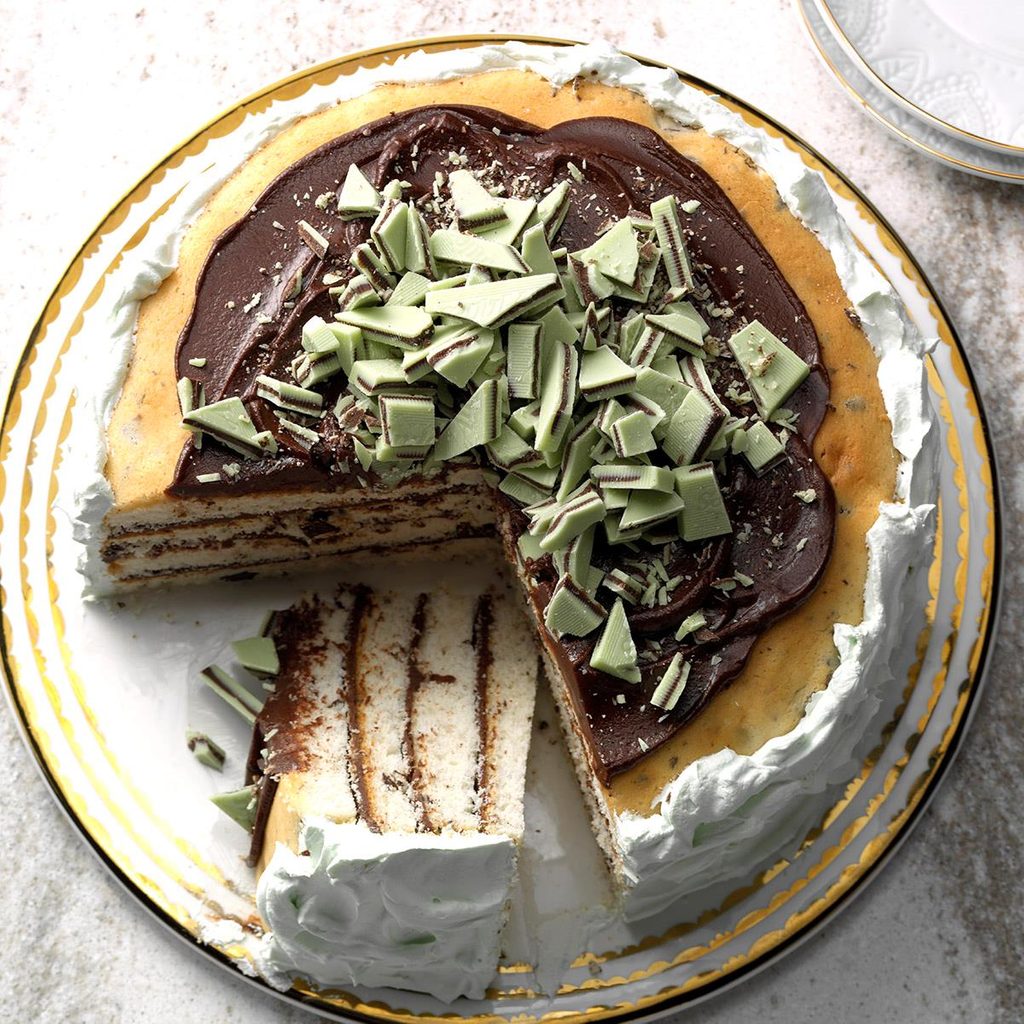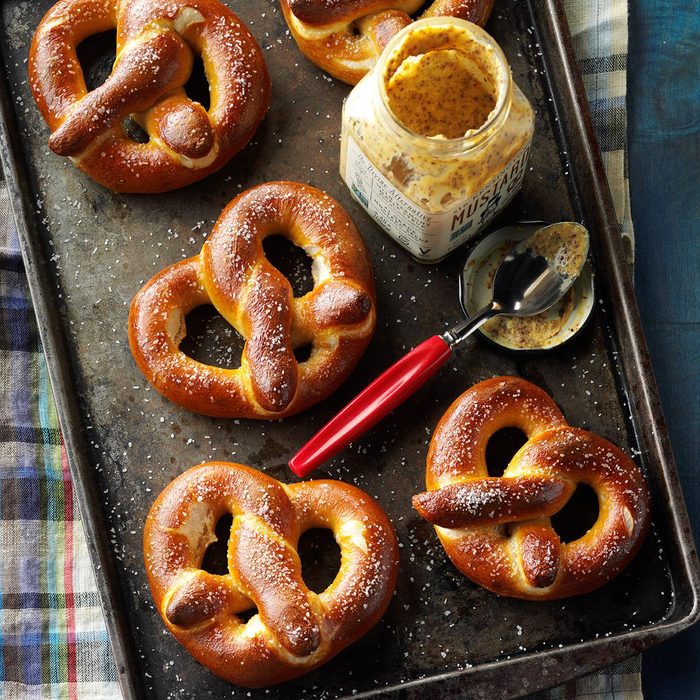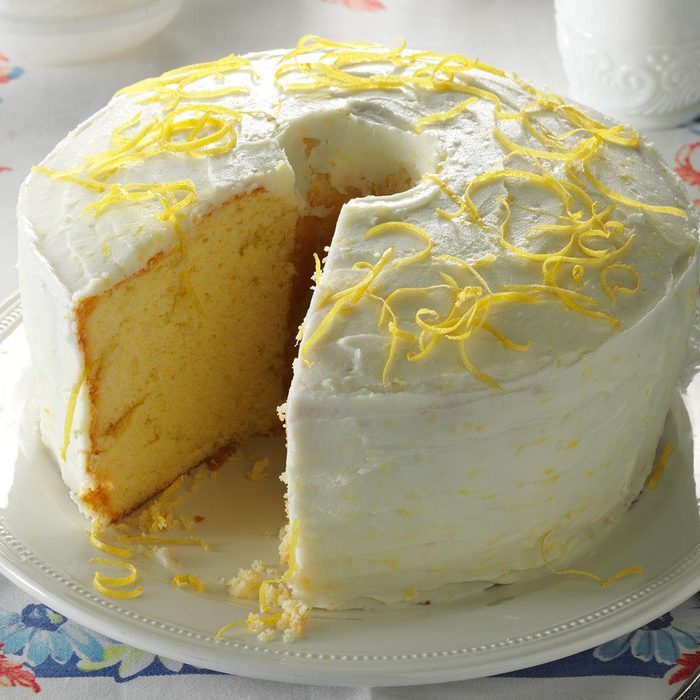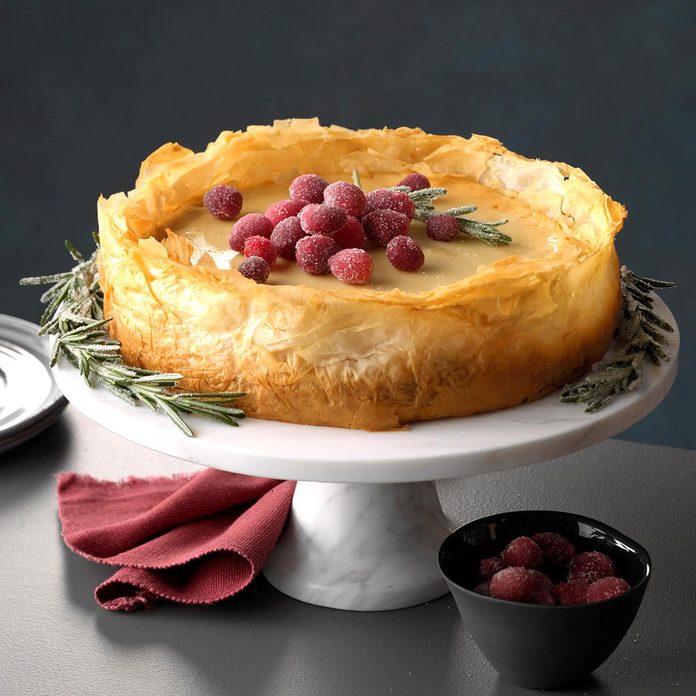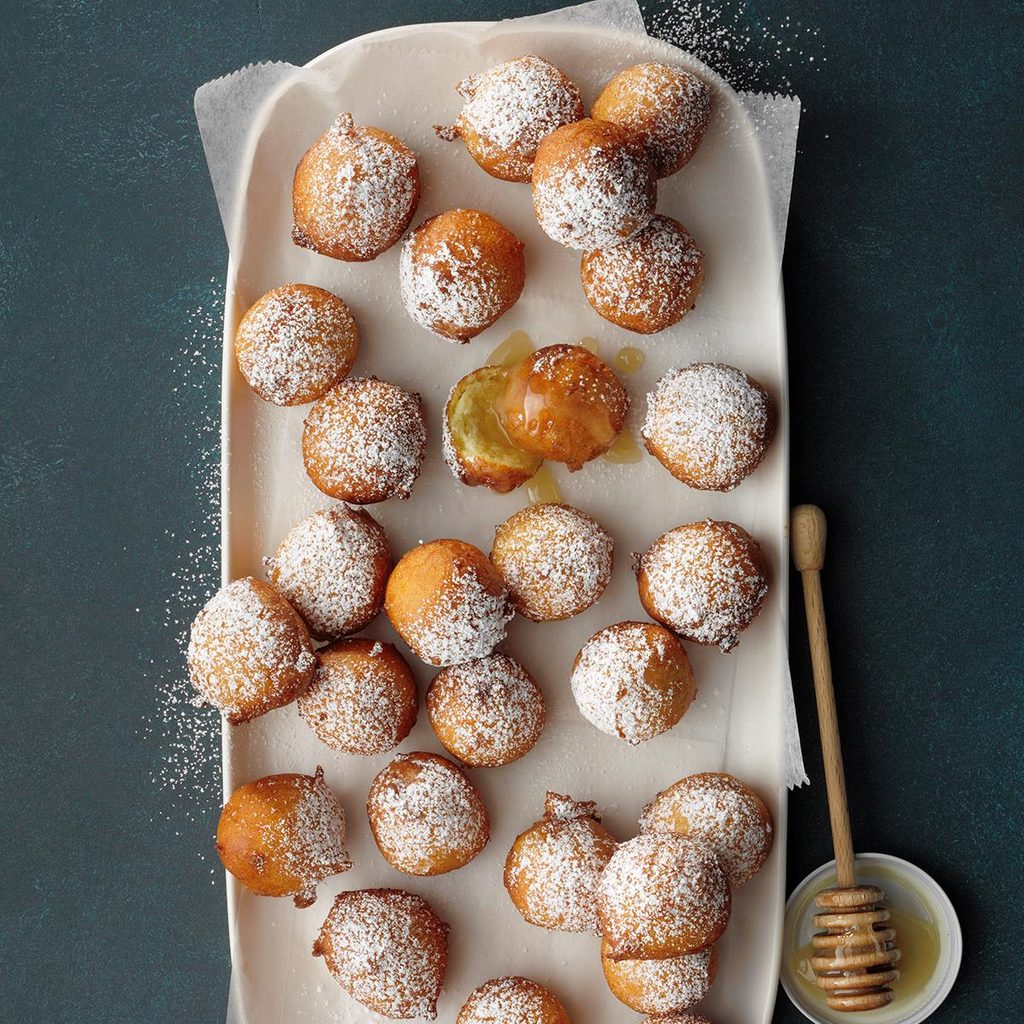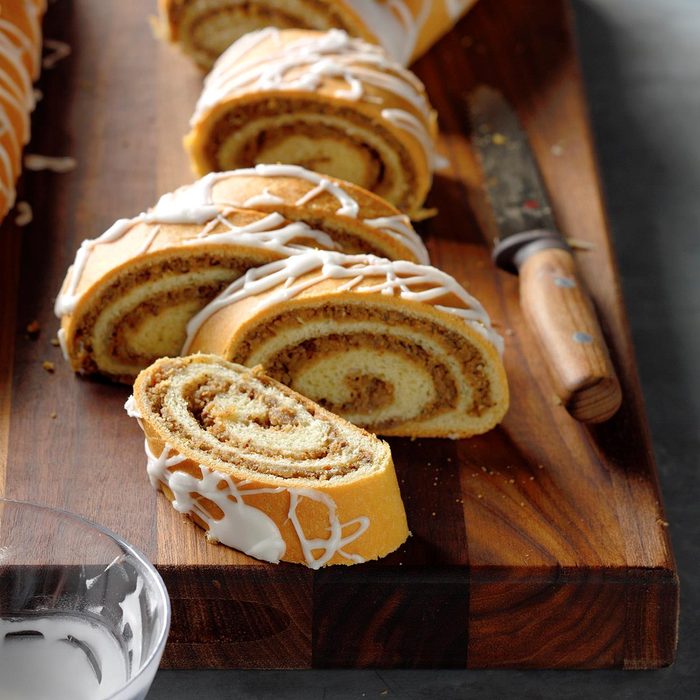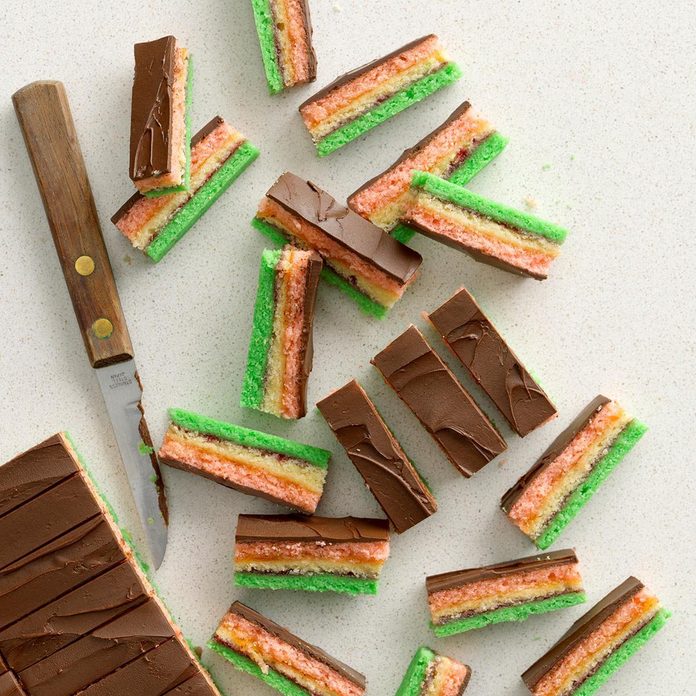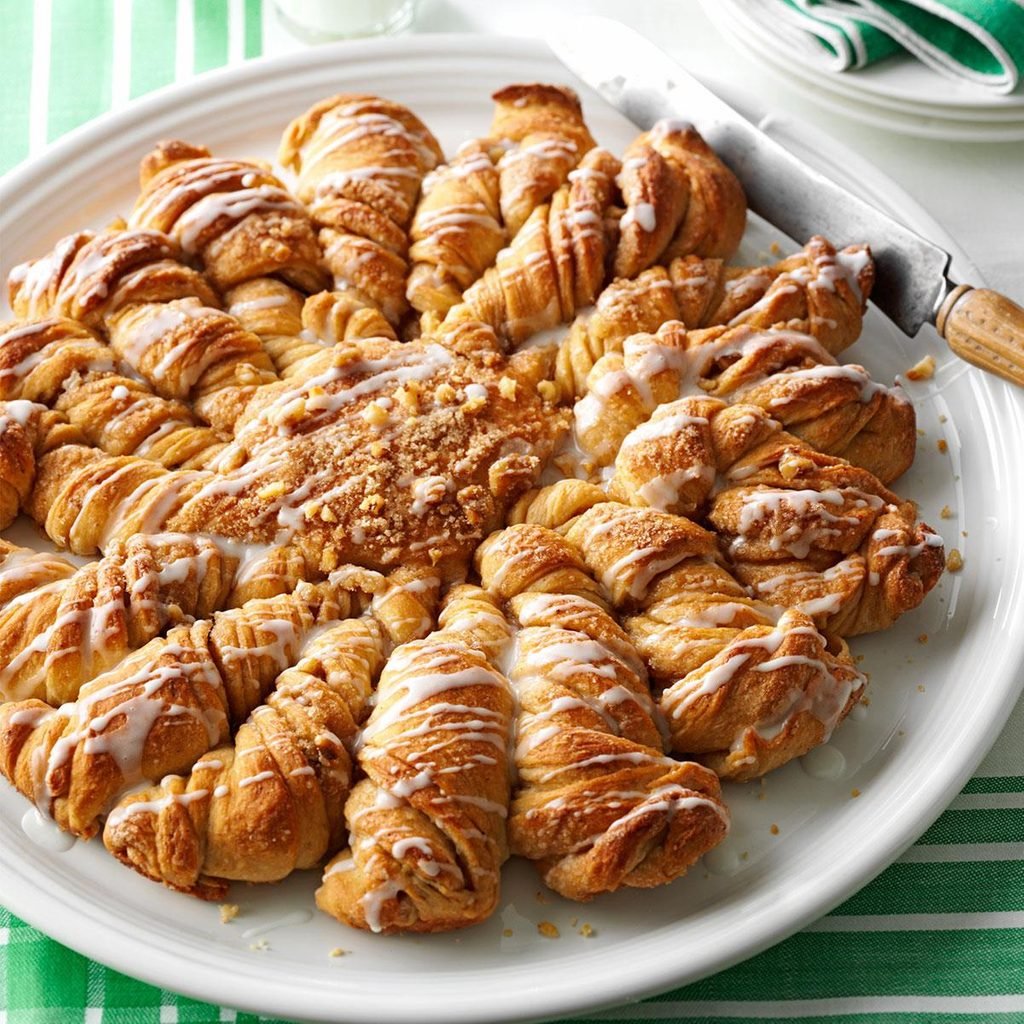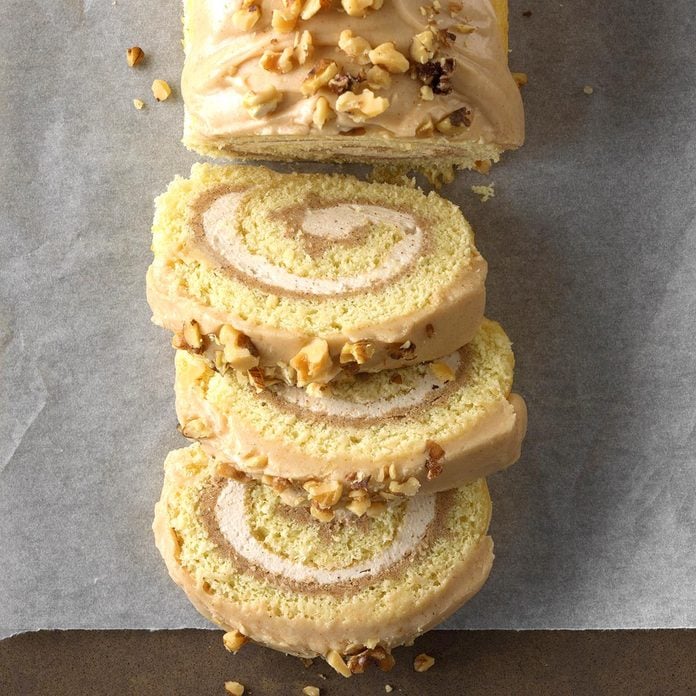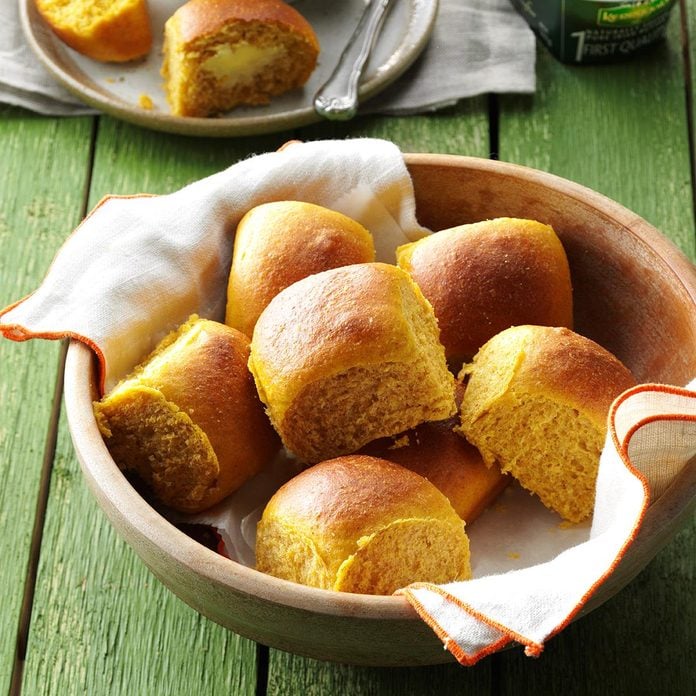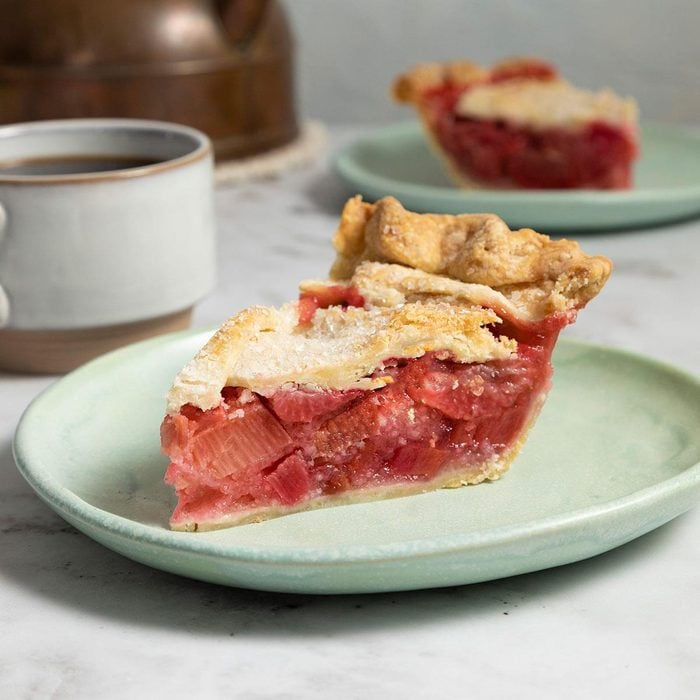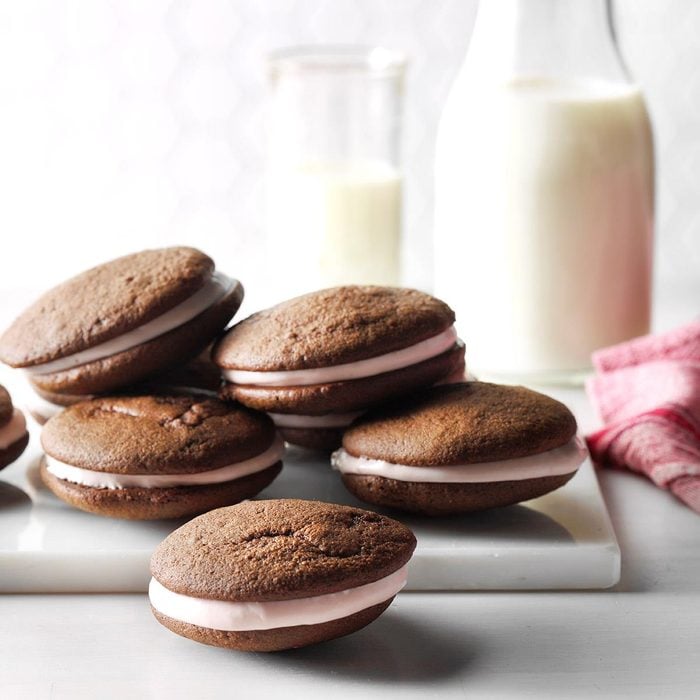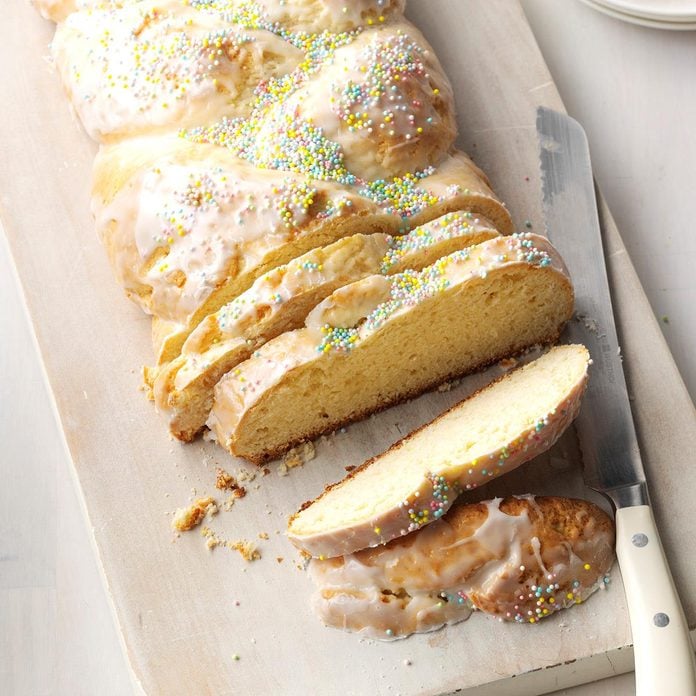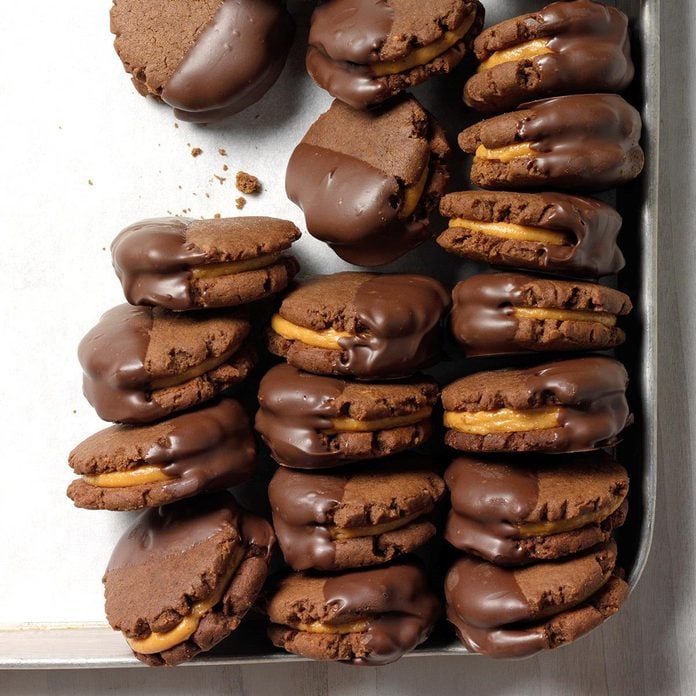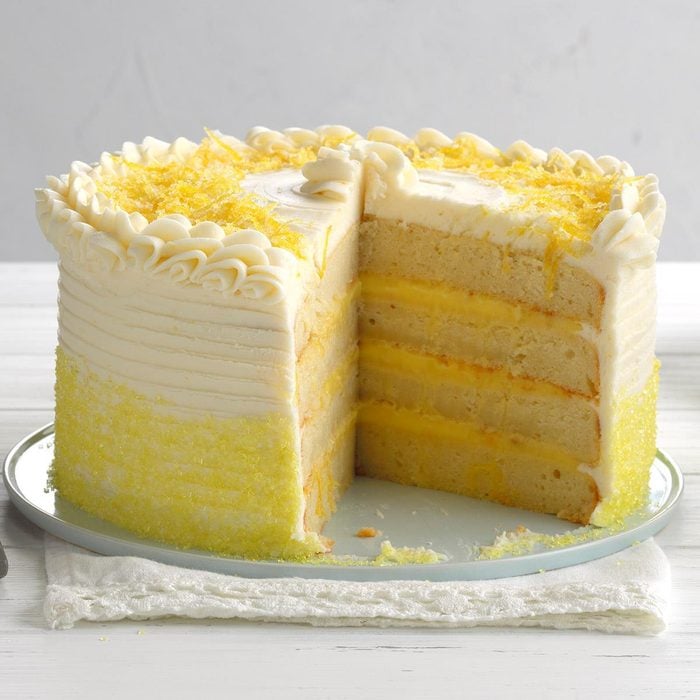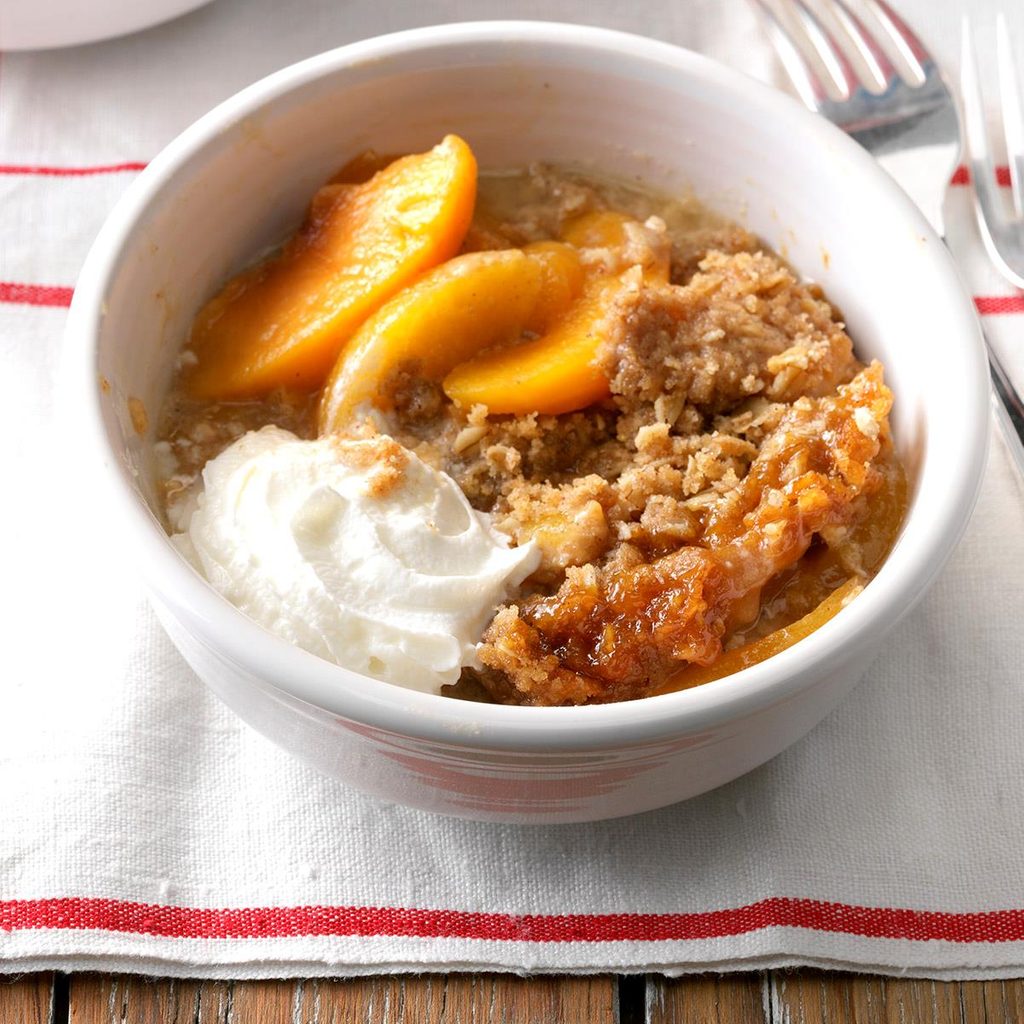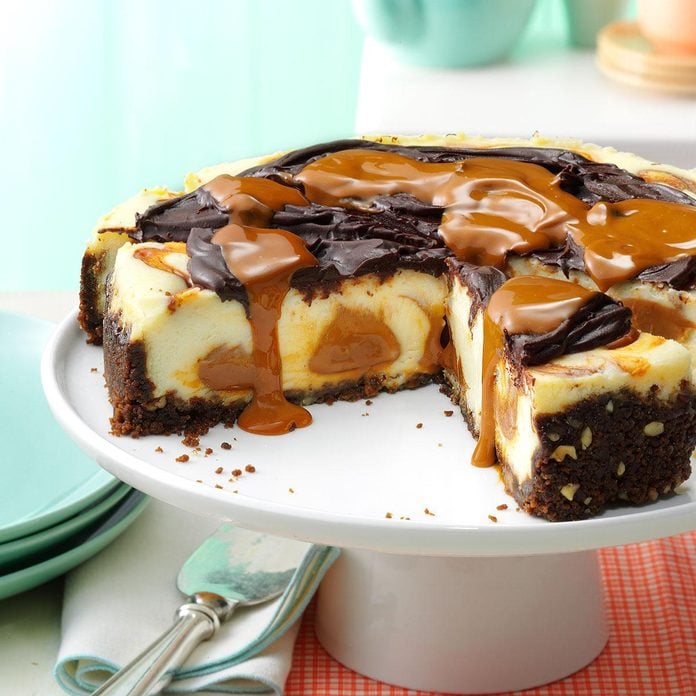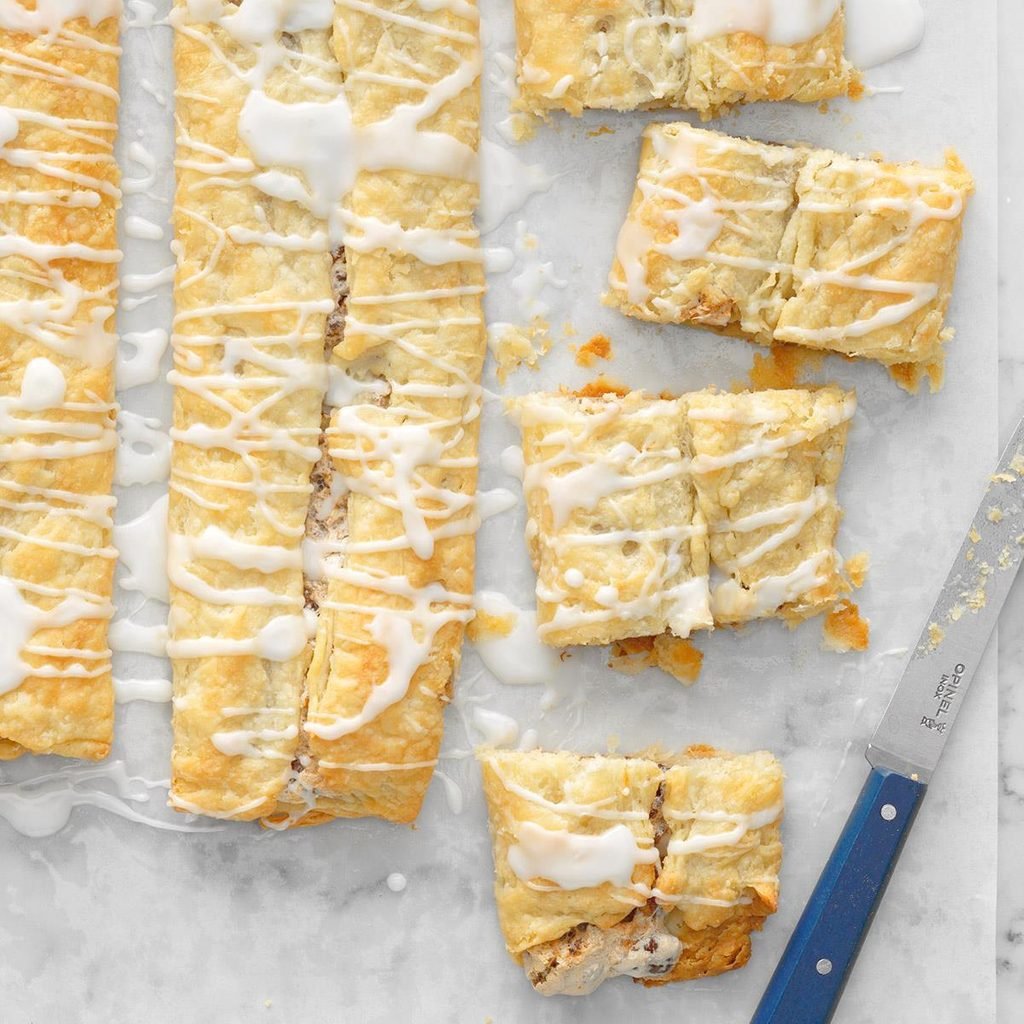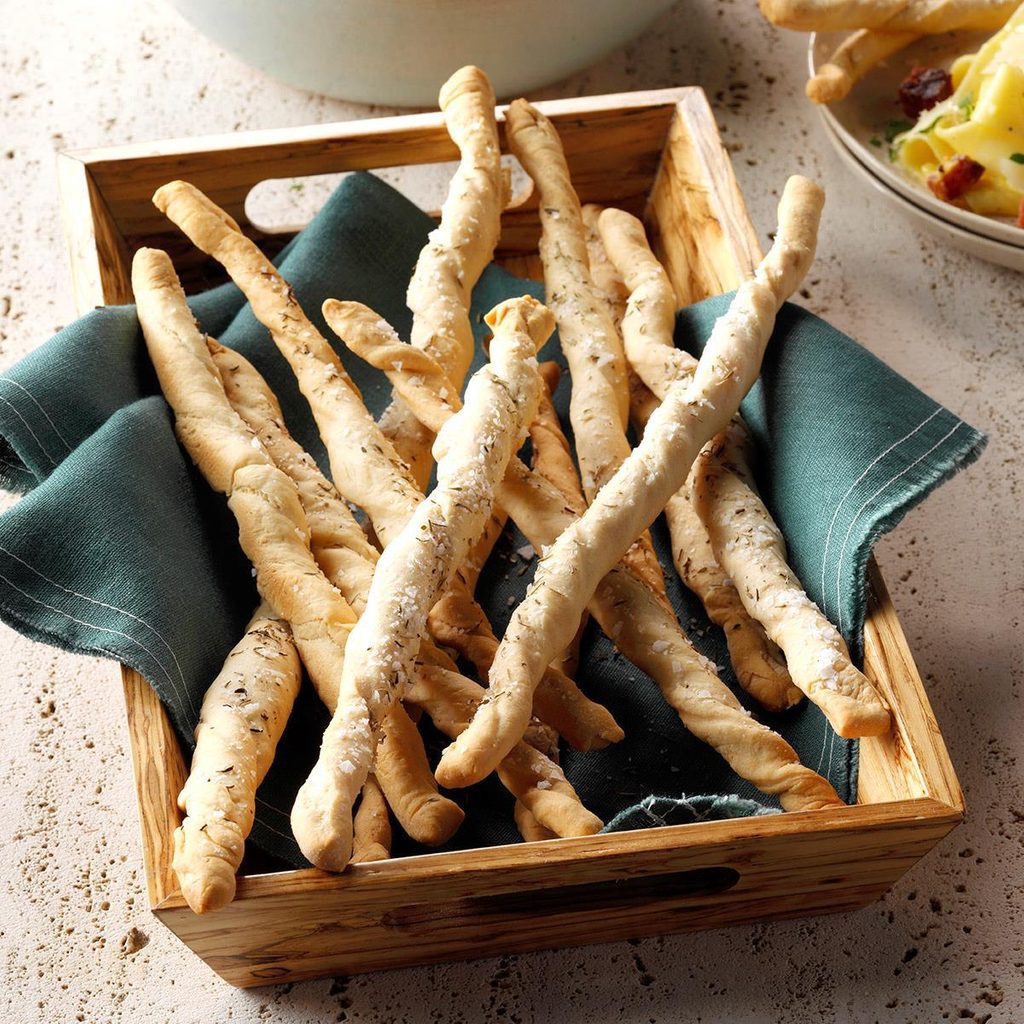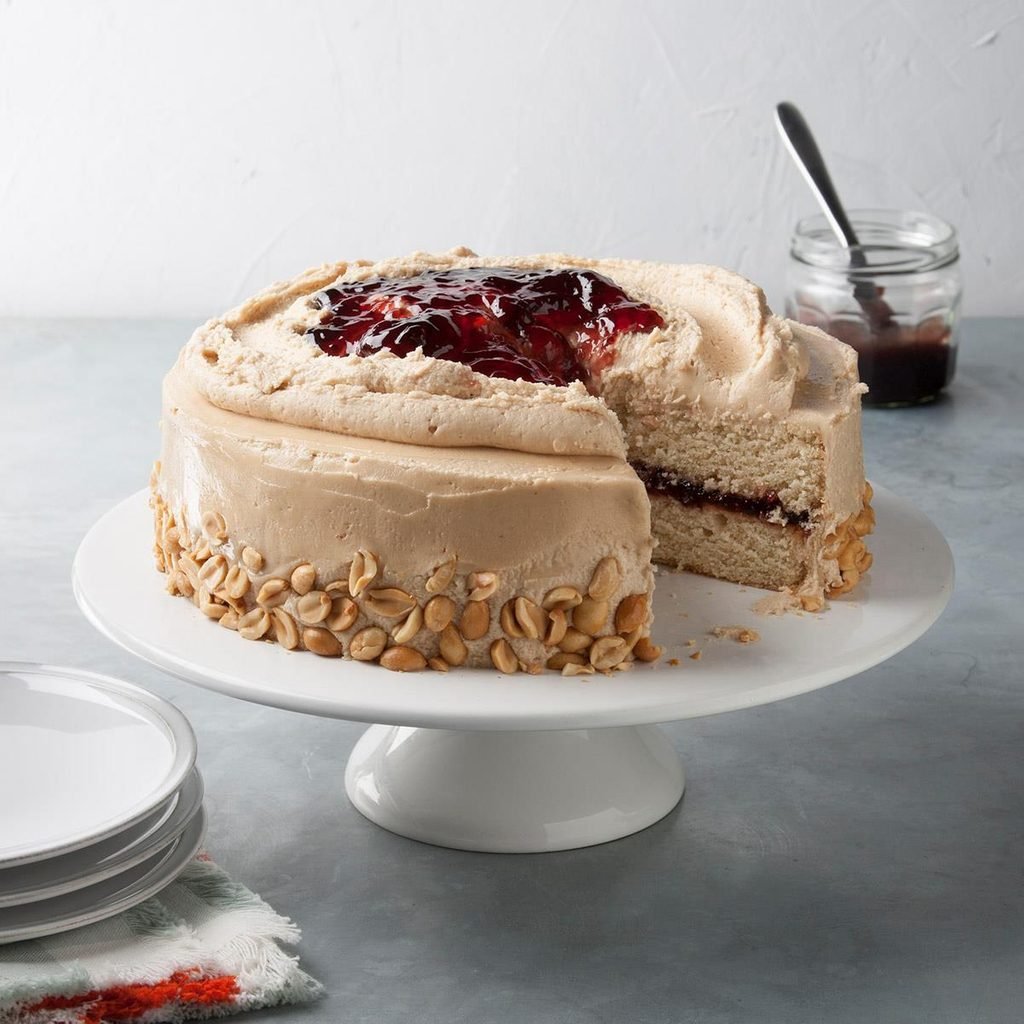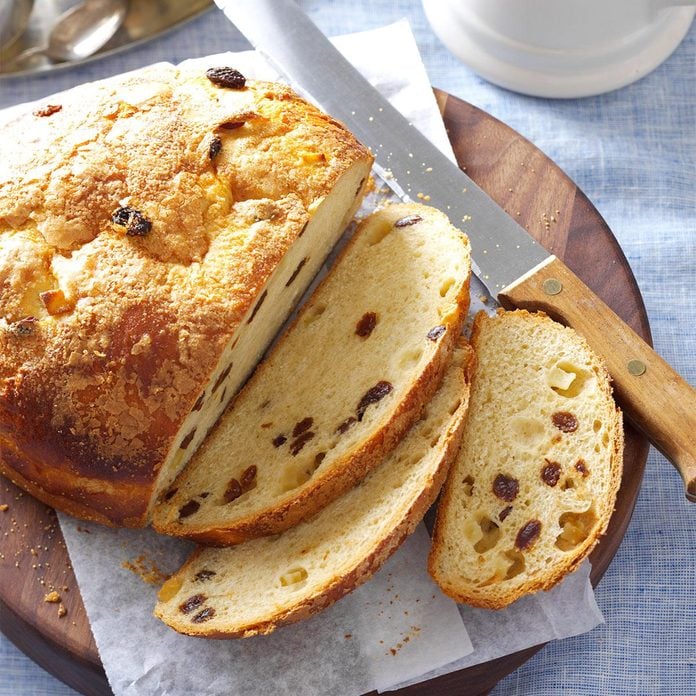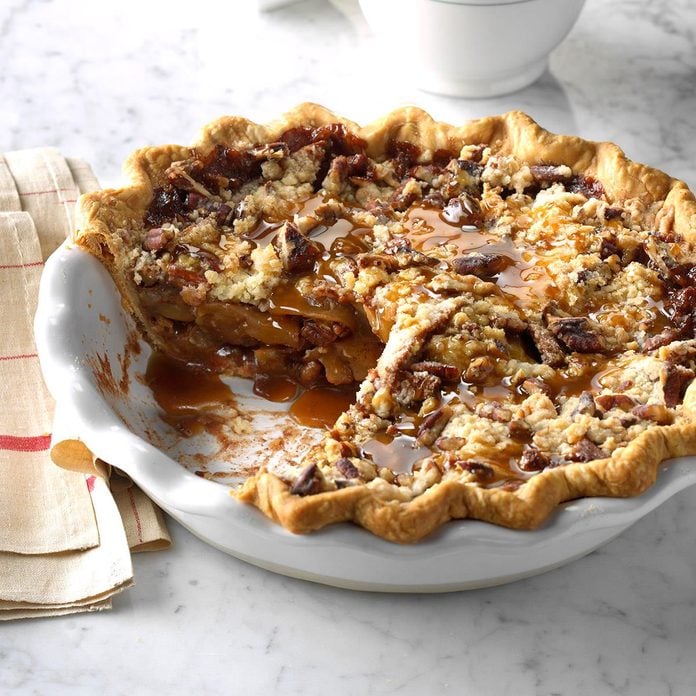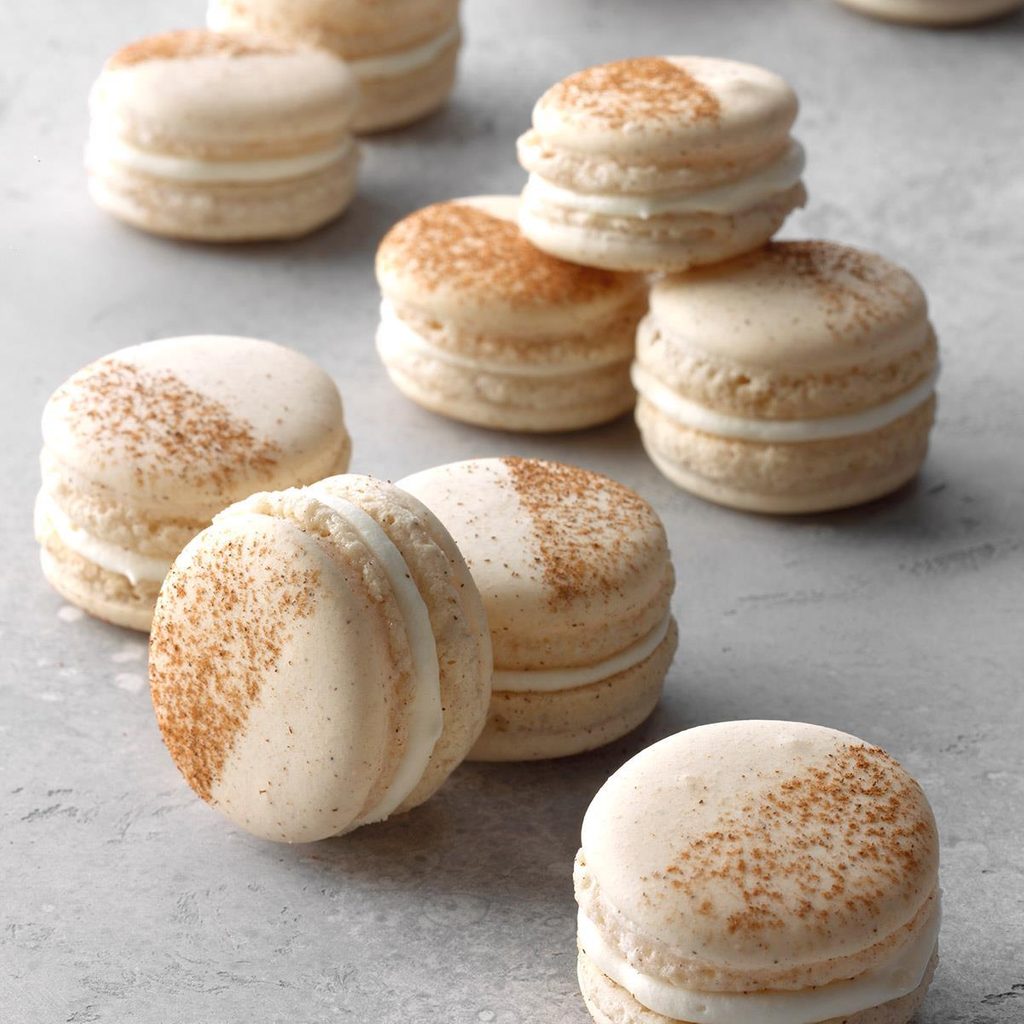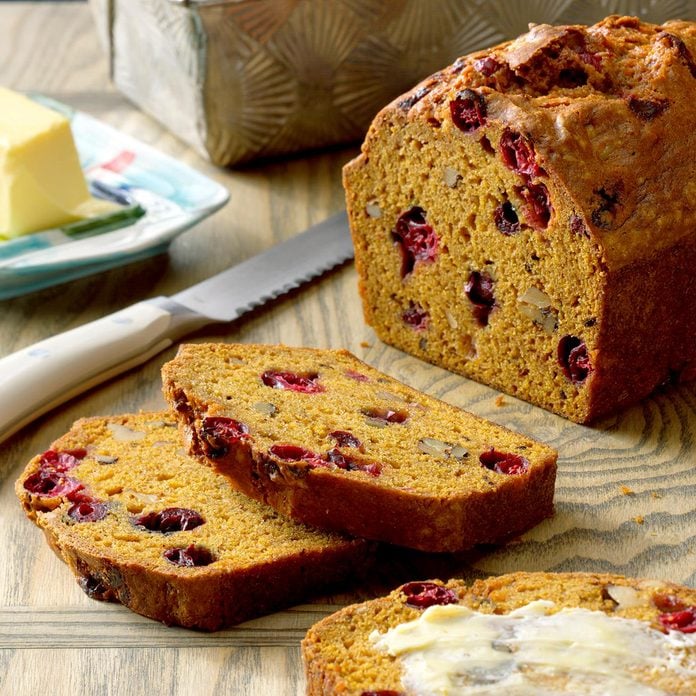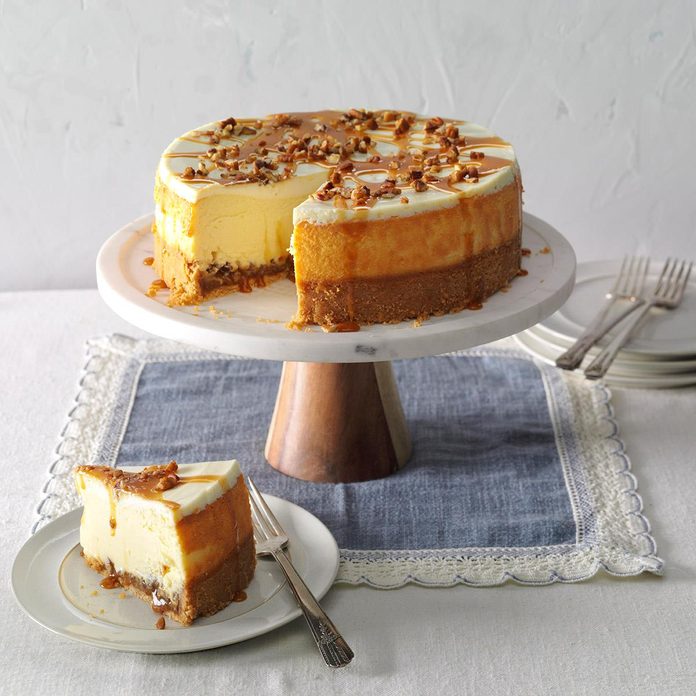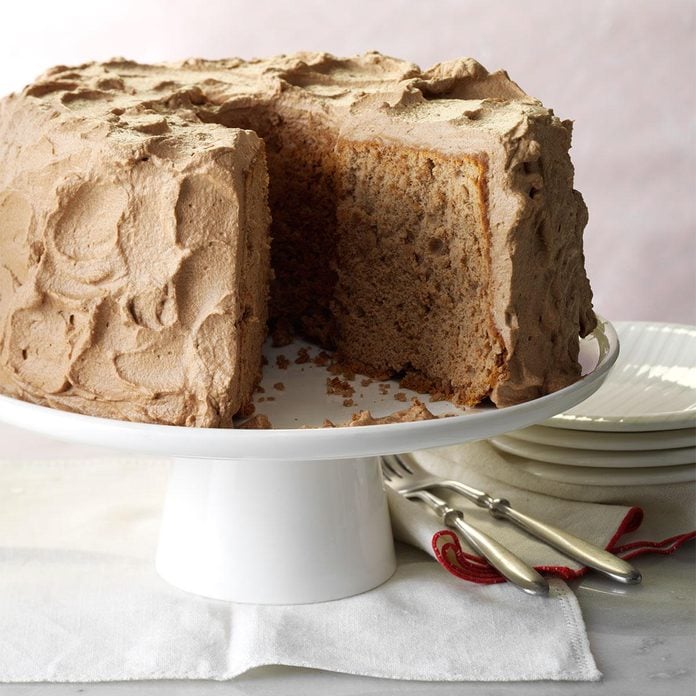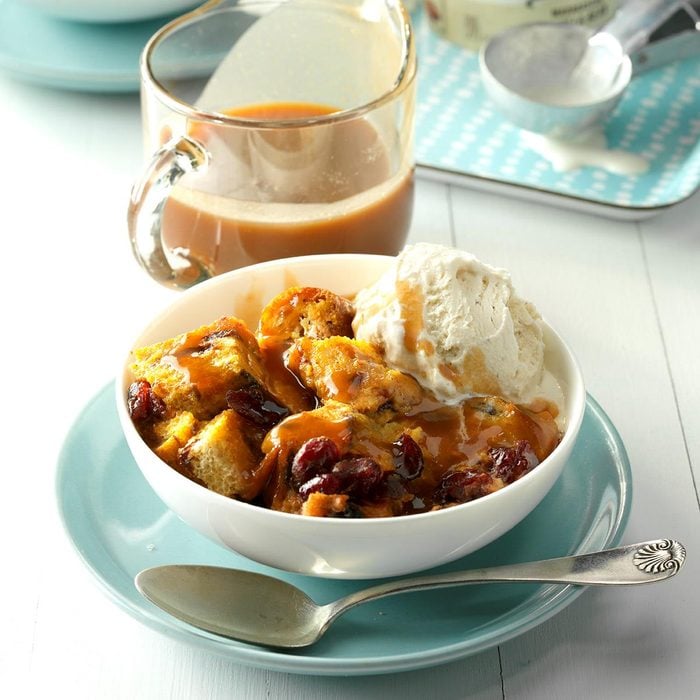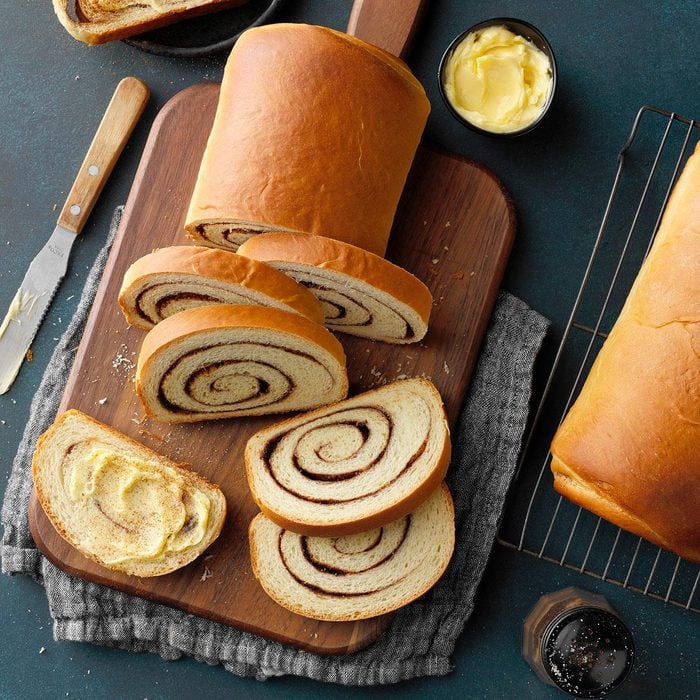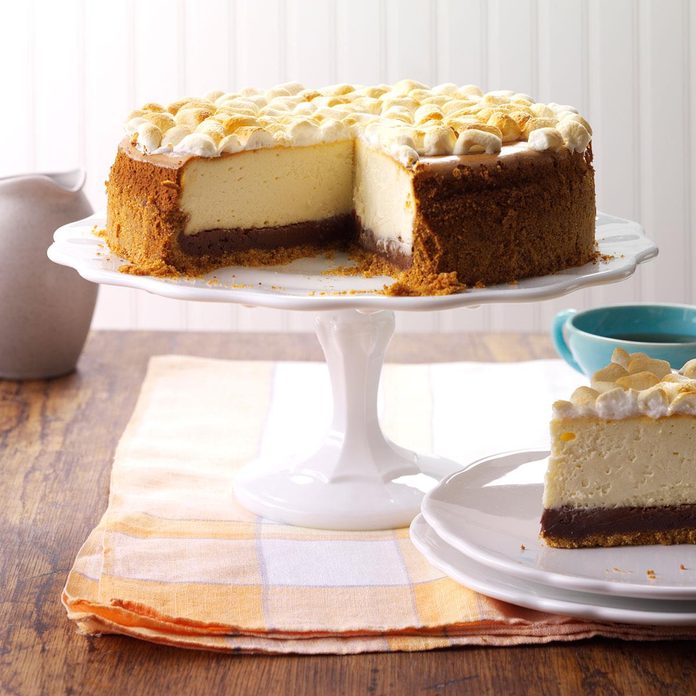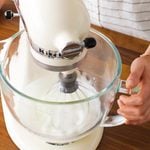As serious bakers will tell you, their craft is more science than anything. To get a perfectly tender cake, a satisfying loaf of bread or just a good old-fashioned chocolate chip cookie, you need the right flour. While a bag of the all-purpose stuff usually suffices, there are lots of flour options out there—each offering a little something special to your bakes.
Now, before you make your next grocery run, brush up on the different types of flours out there and maybe add a few more to your list.
Types of Flour, Explained
Flour is finely milled grains—most typically wheat. Flour helps give all your favorite bakes their chewy, satisfying texture. There are a few things to consider when purchasing flour:
- Grain: Again, most flour is made from wheat, though you can find flours made of other grains like spelt, rye or barley. You’ll see alternative flours made from nuts, coconut, rice and more. Generally, though, when you hear flour, it’s plain ol’ wheat.
- Protein content: The amount of protein varies in each type of flour. Breads with a low amount of protein don’t develop gluten as readily, which leads to more tender bakes. Flours with a higher protein content are more glutenous and provide a stronger structure for bakes like bread.
- Mill: Some flours are very finely ground, like cake flour, which give bakes lightness. Other flours are more coarsely milled and provide more texture.
All-Purpose Flour
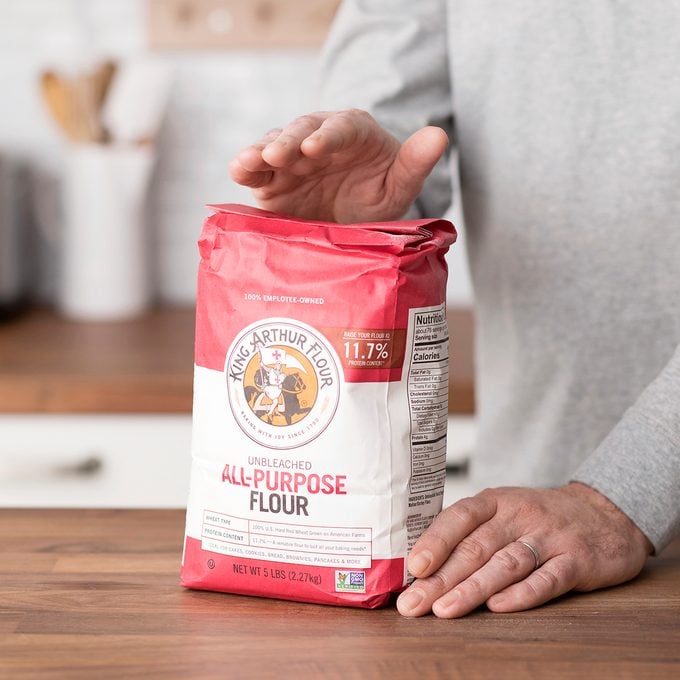 Taste of Home
Taste of Home
The most versatile of the wheat flours, all-purpose is easy to find and easy to use. The name says everything: All-purpose flour can be used in just about any recipe.
With a mid-range protein content of around 10%, this flour is reliable and adaptable, perfect for anything from our best pancakes to carrot cake; it’s also a dependable substitute for other types of flour. A safe bet, make sure to have a bag of AP flour in your pantry at all times
While most recipes call for all-purpose flour, you’ll definitely want to have other flours on hand. While the differences between them may seem small, they can really impact the quality of your bakes.
Self-Rising Flour
Self-rising flour is a blend of all-purpose flour, a leavening agent (baking powder, baking soda or a bit of both) and salt. You’ll see a lot of Southern recipes call for this ingredient, particularly biscuits. When recipes require self-rising flour, you’ll often find that less baking powder or salt is needed in the rest of the recipe.
You can buy packaged self-rising flour right at the store or make your own at home.
Cake Flour and Pastry Flour
For a light, fluffy dessert, turn to tender and delicate cake flour or pastry flour. These flours are finely milled and have a low protein content—around eight percent in cake flour and slightly lower for pastry flour—which is perfect for making light, tender cakes.
Cake flour vs. all-purpose flour: If a recipe calls for cake flour, you can sub in all-purpose if you’re in a pinch. Using cake flour will make a difference in the end product, though. And who doesn’t want lighter, airier cakes? Grab a box and use it in all these recipes with cake flour.
Bread Flour
Bread flour has a higher protein content than its all-purpose cousin—about 12%. This extra protein creates more gluten when kneaded in bread doughs. This gluten gives bread the right structure and texture.
Bread flour vs. all-purpose flour: Like with cake flour, if you don’t have bread flour, all-purpose will work. However, if you’re serious about bread baking, you’ll want to grab a package so you can get the exact texture you’re searching for.
Whole Wheat Flour
Whole wheat flour is made from milled red wheat and has about 14% protein. It also has more fiber than traditional, all-purpose flour. Use it in whole wheat recipes or substitute in some whole wheat for all-purpose flour in your favorite bakes. Be aware that whole wheat flour tends to make your bakes a bit more dense and dry, so only substitute about half of the flour called for in a recipe with whole wheat.
See white whole wheat flour in the grocery store? It’s whole wheat, too, but made with milled white wheat instead of red.
Semolina and Durum Flour
If you enjoy making your own pasta, semolina and durum flour may be familiar to you. These flours are both made from durum wheat and are high in gluten—perfect for making stretchy pasta dough. Semolina is a bit more coarsely ground and durum flour is finer—both are made from the same ingredients.
These flours are a bit more uncommon but are terrific to have on hand for serious pasta fanatics.
00 Flour
Sometimes called doppio zero, 00 flour is the finest milled flour you can find. Many Italian recipes call for this type of flour—especially those for Neopolitan-style pizza. The fine texture provides for soft bakes while the higher protein content (about 12%) makes for that chewy pizza crust we all crave.
Alternative Flours
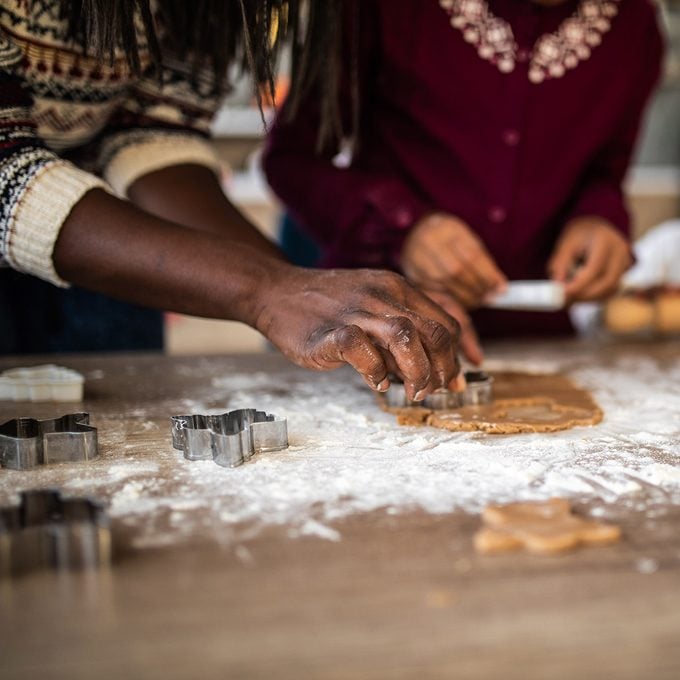 miodrag ignjatovic/Getty Images
miodrag ignjatovic/Getty Images
Rye Flour
If you’re a fan of rye bread, there’s no substitution for rye flour. This grain provides great depth of flavors in bakes, so it’s a good ingredient to have on hand for experimentation. Since rye doesn’t form gluten as readily as traditional wheat flours, it’s best not to use all rye flour in a recipe, but subbing in some in your go-to biscuit, bread, muffin or sugar cookie recipe can yield delicious results.
Potato Flour
Let’s get one thing straight before talking about this flour: Potato flour is different than potato starch. Potato flour is made from whole peeled potatoes that have been cooked, dried and then ground into a flour. Potato starch is the remnants from crushed potatoes that is dried into a powder. Potato flour has flavor while the starch is just starch for thickening.
Now that that’s sorted, let’s get into why potato flour is so terrific. This flour does a great job at absorbing liquid and holding onto moisture so you have really lush bakes. Used in bread, it makes the dough easy to handle and creates soft, wonderful bakes like with this swirled rye bread. You can also use potato flour to thicken soups and stews.
Almond Flour
This nut flour is becoming more common in grocery stores thanks to a very particular bake: the French macaron. These delicate cookies rely on almond flour for a nutty flavor and delicate texture. Almond flour also has a place in other bakes like Passover cookies and olive oil cake.
Use almond flour in gluten-free baking or to add almond flavor without relying upon chopped nuts. If you’re interested in exploring the other health benefits of almond flour, find out if almond flour is good for diabetics.
Gluten-Free Flour Blends
When you’re looking for an easy way to make your favorite bakes gluten-free, a gluten-free blend is a way to go. These flours combine several gluten-free options like rice flour and potato starch. Look for brands that you can use cup-for-cup like King Arthur Measure-for-Measure or Cup 4 Cup Gluten-Free Flour. You can also make your own GF flour mix.
More Gluten-Free Flours
There are lots of gluten-free flour options out there. Here are just a few to consider when experimenting in the kitchen:
- Amaranth flour
- Buckwheat flour
- Chestnut Flour
- Chickpea flour
- Coconut flour
- Hazelnut flour
- Millet flour
- Oat flour
- Quinoa flour
- Rice flour
- Sorghum flour
- Tapioca flour
How to Store Flour
Flour, like many baking staples, is best stored in an airtight container in the pantry or cupboard. If you don’t think that you’ll use your flour within a year, pop it into the freezer where you can extend the shelf life for an additional year. Again, make sure you store it in an airtight container or bag—the paper bag it comes in isn’t good for long-term storage.
From self-rising to all-purpose, there are plenty of options to choose from. Don’t be intimidated! Before starting a baking project, simply determine what texture you’re hoping to achieve. Light and fluffy or dense and chewy, understanding texture and gluten content is the best way to decide what type of flour you need.
Happy Baking!
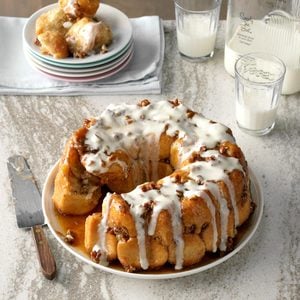 Taste of Home
Taste of Home
The kids will get a kick out of pulling off gooey pieces of this delectable monkey bread. It's hard to resist the caramel-coated treat. —Taste of Home Test Kitchen
Get Recipe
Decadent Chocolate Crepe CakeNo other dessert has wowed family and friends the way this stunning crepe cake did the first time I made it. A showstopper in every sense of the word, it features layers of tender chocolate crepes and rich white chocolate buttercream frosting draped in a semisweet chocolate ganache. —Tina Sawchuk, Ardmore, Alberta
Mini Maple Cinnamon RollsMaple syrup sweetens these lovely little cinnamon buns. I make the dough in my bread machine before popping the rolls in the oven. My husband prefers them warm. —Juanita Carlsen, North Bend, Oregon
BaklavaBaklava is a traditional Middle Eastern pastry made with flaky phyllo dough, chopped nuts and sweet honey. This dessert is very rich, so one pan goes a long way. —Judy Losecco, Buffalo, New York
Chocolate EclairsWith creamy filling and fudgy frosting, this chocolate eclair recipe is extra special. —Jessica Campbell, Viola, Wisconsin
Italian Cream Cheese CakeButtermilk makes every bite of this awesome Italian cream cheese cake recipe moist and flavorful. I rely on this recipe year-round. —Joyce Lutz, Centerview, Missouri
Maple Butter TwistsMy stepmother gave me the recipe for a delicious yeast coffee cake shaped into pretty rings. When I make it for friends, they always ask for seconds. —June Gilliland, Hope, Indiana
Coconut Cheesecake & Rhubarb CompoteI took my daughter’s love of cheesecake plus my mom’s love of coconut and rhubarb and ran with it. Try it with a smidge of chocolate sauce, too. —Wendy Rusch, Trego, Wisconsin
Olive FocacciaWhen I add my own special touches to a basic focaccia recipe—including sun-dried tomatoes, olives and roasted sweet red peppers—the results were simply delectable. The flavorful, chewy loaf makes a wonderful accompaniment to nearly any meal. —Dee Froemel, Hayward, Wisconsin
Cherry DanishThese ruby-studded pastries will be the first to disappear from your brunch table. I won an award when I first made them for a 4-H competition years ago. You can use apple pie filling with equally good results. —Christie Cochran, Canyon, Texas
Best Ever BreadsticksPresent these delicious breadsticks alongside an Italian favorite like lasagna or spaghetti. They're an attractive and edible addition to the table setting! —Carol Wolfer, Lebanon, Oregon
Chocolate BabkaI love this chocolate babka. It's a rewarding recipe for taking the next step in your bread baking. Even if it's slightly imperfect going into the oven, it turns out gorgeous. Look at those swirls! —Lisa Kaminski, Wauwatosa, Wisconsin
Poteca Cake“Rock Springs is home to 56 nationalities, and this recipe showcases its Slavic heritage. It’s one of my favorite ethnic holiday treats.”
—Rachelle Stratton
Rock Springs, Wyoming
Focaccia BareseThis focaccia has been in my mom's family for several generations. It is one of my most-requested recipes whenever I am invited to a party—I am not allowed to attend unless I bring it! —Dora Travaglio, Mount Prospect, Illinois
Dutch Apple CakeMy husband and I came to Canada from Holland more than 40 years ago. This traditional Dutch recipe is a family favorite and has frequently gone along with me to potluck suppers and other get-togethers. —Elizabeth Peters, Martintown, Ontario
Lemon Cream PuffsThe fluffy filling for these light crisp shells has a delectable citrus flavor. —Doreen Martin, Kitimat, British Columbia
Chocolate CannoliWe made two Italian treats into one with beautiful pizzelle cookies wrapped around a rich, chocolaty cannoli filling. The chopped pistachios are a pretty added touch. —Taste of Home Test Kitchen
Three-Layer Chocolate Ganache CakeThis decadent triple-layer beauty is pure chocolate indulgence. The cake layers can be frozen prior to final assembly; in fact, they're easier to work with when frozen. —Kathleen Smith, Overland, Missouri
Homemade BagelsI always wanted to make my own bagels, so I searched to find a bagel recipe I could try. For variation and flavor, I sometimes add cinnamon and raisins or honey and sesame seeds to the dough.
German Apple StrudelThis gorgeous strudel has just what you crave this time of year: thin layers of flaky crust and lots of juicy apples. —Darlene Brenden, Salem, Oregon
Homemade ChurrosThese fried cinnamon-sugar homemade churros are best when fresh and hot. Try them with a cup of coffee or hot chocolate. Don't be surprised if people start dunking...and then go back for more.
Gingersnap Crumb Pear PieThis basic recipe was one my grandmother used for making crumble pies from fresh fruit. She simply substituted oats, gingersnaps or vanilla wafers depending on the fruit. Pear was always my favorite, and I added the ginger and caramel to give it a new twist. —Fay Moreland, Wichita Falls, Texas
Swiss Cheese BreadThis bread will receive rave reviews, whether you serve it as an appetizer or with a meal. For real convenience, you can make it ahead of time and freeze it! —Karla Boice, Mahtomedi, Minnesota
Bee Sting CakeThe bee sting cake, or
bienenstich, may look daunting, but it's well worth the effort. Take the steps one at a time and you'll be surprised how easy it is to make. —Taste of Home Test Kitchen
Sage & Gruyere Sourdough BreadA sourdough starter gives loaves extra flavor and helps the rising process. This bread, with sage and Gruyere cheese, comes out so well that I’m thrilled to share it. —Debra Kramer, Boca Raton, Florida
Minted Chocolate TorteOur family has enjoyed this remarkable layered cake for years. It's a favorite for many occasions. —Barbara Humiston, Tampa, Florida
Soft Giant PretzelsMy husband and our friends and family love these soft, chewy pretzels. Let the bread machine mix the dough, then all you have to do is shape and bake these fun snacks. —Sherry Peterson, Fort Collins, Colorado
Lemon Chiffon CakeThis moist, airy lemon chiffon cake was my dad's favorite. Mom revamped the original recipe to include lemons. I'm not much of a baker, but whenever I make this dessert my family is thrilled! —Trisha Kammers, Clarkston, Washington
Baklava CheesecakeWith sugared cranberries and rosemary sprigs, my unique baklava cheesecake makes a grand display for office parties and other special events. —Aryanna Gamble, New Orleans, Louisiana
Lemon Ricotta FrittersThese mouthwatering fritters are golden brown outside, soft and cakelike inside, and have a lovely citrusy and creamy flavor from the classic duo: lemon ricotta. Fritters are great served warm with jam or honey. —Tina Mirilovich, Johnstown, Pennsylvania
Unicorn CakeThis magical unicorn cake tastes as good as it looks. Baking in smaller pans creates impressive height, and a few simple decorating tricks turn it into a showstopping dessert. —Lauren Knoelke, Des Moines, Iowa
Hungarian Nut RollsIt isn't officially the holidays until I've made this treasured nut roll recipe from my husband's grandmother. The apple-walnut filling is moist, subtly sweet and flavorful. —Donna Bardocz, Howell, Michigan
Rainbow CookiesI always bake these cookies two weeks ahead. That allows enough time for mellowing, leaving them moist and full of almond flavor. —Mary Ann Lee, Clifton Park, New York
Maple Nut Coffee CakeEvery time I make this coffee cake for the holidays or church functions, the pan is emptied in a hurry. People rave about it. —Rosadene Herold, Lakeville, Indiana
Cinnamon Twirl Roly-PolyMy whole house smells incredible when this cake is in the oven. Change it up with other extracts—maple is heavenly. —Holly Balzer-Harz, Malone, New York
Pumpkin Pan RollsServe these spicy-sweet pumpkin rolls for dinner—or at any time of day–and get ready to hear a chorus of yums in your kitchen! —Linnea Rein, Topeka, Kansas
Strawberry Rhubarb PieWhile growing up on a farm, I often ate rhubarb, so it's natural for me to use it in a pie. I prefer to use lard for the flaky pie crust and thin red rhubarb stalks for the filling. These two little secrets helped this strawberry rhubarb pie recipe win top honors at the 2013 Iowa State Fair. —Marianne Carlson, Jefferson, Iowa
Chocolate-Raspberry Whoopie PiesI’ve saved this jam-filled whoopie pie recipe for years after cutting it out of a newspaper. It’s one of my grandson's personal favorites. —Nancy Foust, Stoneboro, Pennsylvania
Italian Ricotta Easter BreadI changed our family's traditional Easter bread by adding ricotta and a few other ingredients. The almond flavoring works wonders! — Tina Mirilovich, Johnstown, Pennsylvania
Jamaican Chocolate Cookies with Caramel CremeI made these for an office party cookie contest—not a crumb was left on the platter! —Noelle Myers, Grand Forks, North Dakota
Lemon Ricotta CakeThis lemon ricotta cake recipe is a family gem that was passed down from my grandmother and mother. Garnished with shaved lemon zest, the moist four-layer cake is the perfect dessert when you want to impress. —Nanette Slaughter, Sammamish, Washington
Slow-Cooker Peach CrumbleI look forward to going on our beach vacation every year, but I don't always relish the time spent cooking for everybody. This slow-cooker dessert (or breakfast!) gives me more time to lie in the sun and enjoy the waves. Melty ice cream is a must. —Colleen Delawder, Herndon, Virginia
Dulce de Leche CheesecakeI'm originally from Paraguay, and dulce de leche reminds me of where I came from. If you can't find it at your grocery store, try caramel ice cream topping instead. It tastes different, but this decadent dessert will still be amazing. —Sonia Lipham, Ranburne, Alabama
Pecan Kringle SticksMy family loves that the kringle is flaky and not too sweet—it just melts in your mouth. This makes a beautiful presentation on a cookie platter along with other holiday sweets. —Connie Vjestica, Brookfield, Illinois
Crunchy BreadsticksThese thin, crisp breadsticks created in our Test Kitchen add a bit of elegance to a holiday dinner. Each bite is perfectly seasoned with thyme and coarse salt.
Peanut Butter 'N' Jelly CakeI made this fun and flavorful peanut butter and jelly cake for my son's first birthday. He just turned 33, and he still has to have his favorite treat. Kids of any age have a hard time turning down peanut butter and jelly—especially when it comes tucked into cake and frosting! —Linda Graybill, Sebring, Florida
Apple Raisin BreadI've been making this bread for many years. It smells so good in the oven and tastes even better. I make bread almost every Saturday, and it doesn't stay around long with our sons home from college in the summer. —Perlene Hoekema, Lynden, Washington
Caramel-Pecan Apple PieYou'll love the smell in your kitchen—and the smiles on everybody's faces—when you make this scrumptious caramel apple pie recipe. It takes me back home to Virginia, to my granny's table. —Jean Castro, Phoenix, Arizona
Cinnamon Roll MacaronsThese macarons are a fall and winter staple for me. Inspired by the classic cinnamon roll, they are a delicious treat for a cold or snowy day. These pair well with a mug of tea, and can be eaten as a dessert or just a snack. Other fillings would work well with this—including custard, mousse, ganache or other buttercream.
—Elizabeth Ding, El Cerrito, California
Cranberry Pumpkin BreadPut leftover cranberries and pumpkin to great use in this moist quick bread. It’s very good with my "secondhand turkey" casserole for an after-Thanksgiving meal. —Dixie Terry, Goreville, Illinois
Caramel Pecan CheesecakeI created this creamy cheesecake using two of my favorites—caramel and pecans. It is a stunning cake and rivals any I've tasted. —Deidre Sizer, Cedarville, Ohio
Chocolate Angel CakeWhen I was married in 1944, I could barely boil water. My dear mother-in-law taught me her specialty—making the lightest angel food cakes ever. This chocolate version is an easy, impressive treat. —Joyce Shiffler, Colorado Springs, Colorado
Pumpkin Cranberry Bread PuddingSavor your favorite fall flavors with this scrumptious bread pudding, served warm with a sweet vanilla sauce. Yum! —Judith Bucciarelli, Johnson, New York
Cinnamon Swirl BreadYour family will be impressed with the soft texture and appealing swirls of cinnamon in these buttery breakfast loaves. —Diane Armstrong, Elm Grove, Wisconsin
S'mores CheesecakeThis sweet and decadent cheesecake features graham crackers, chocolate and marshmallows. Enjoy! —Kurt Anderson, Willmar, Minnesota
